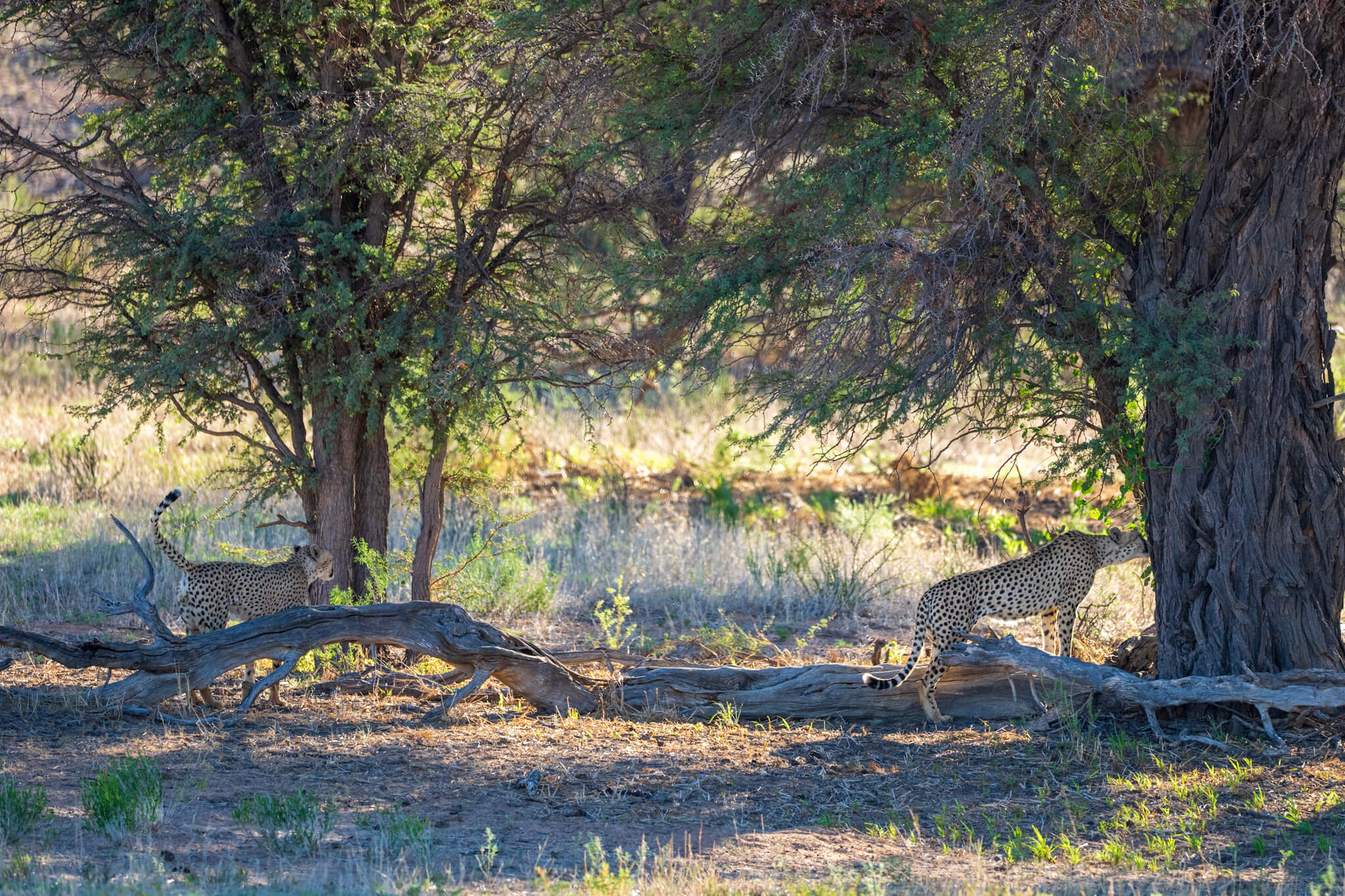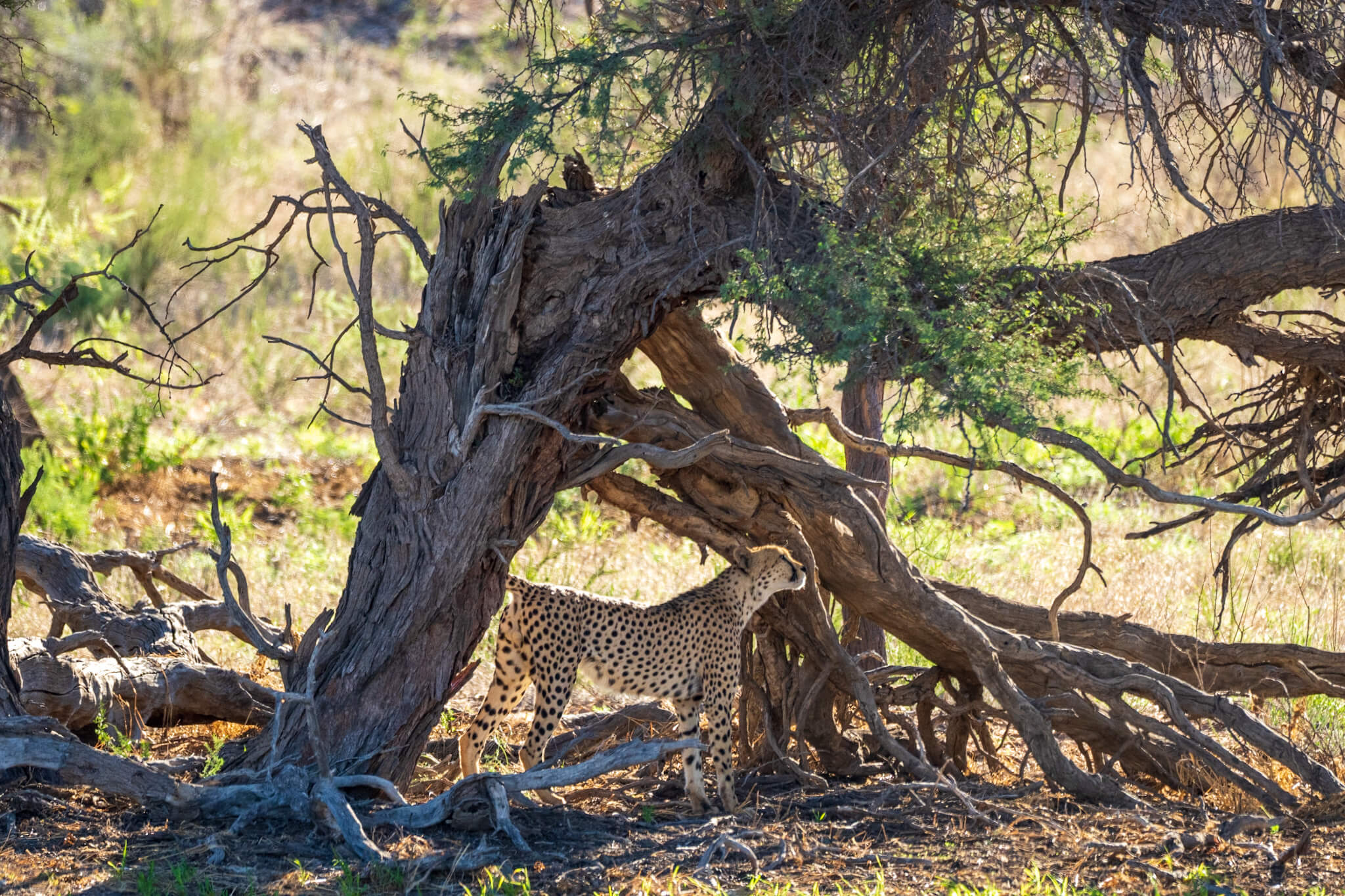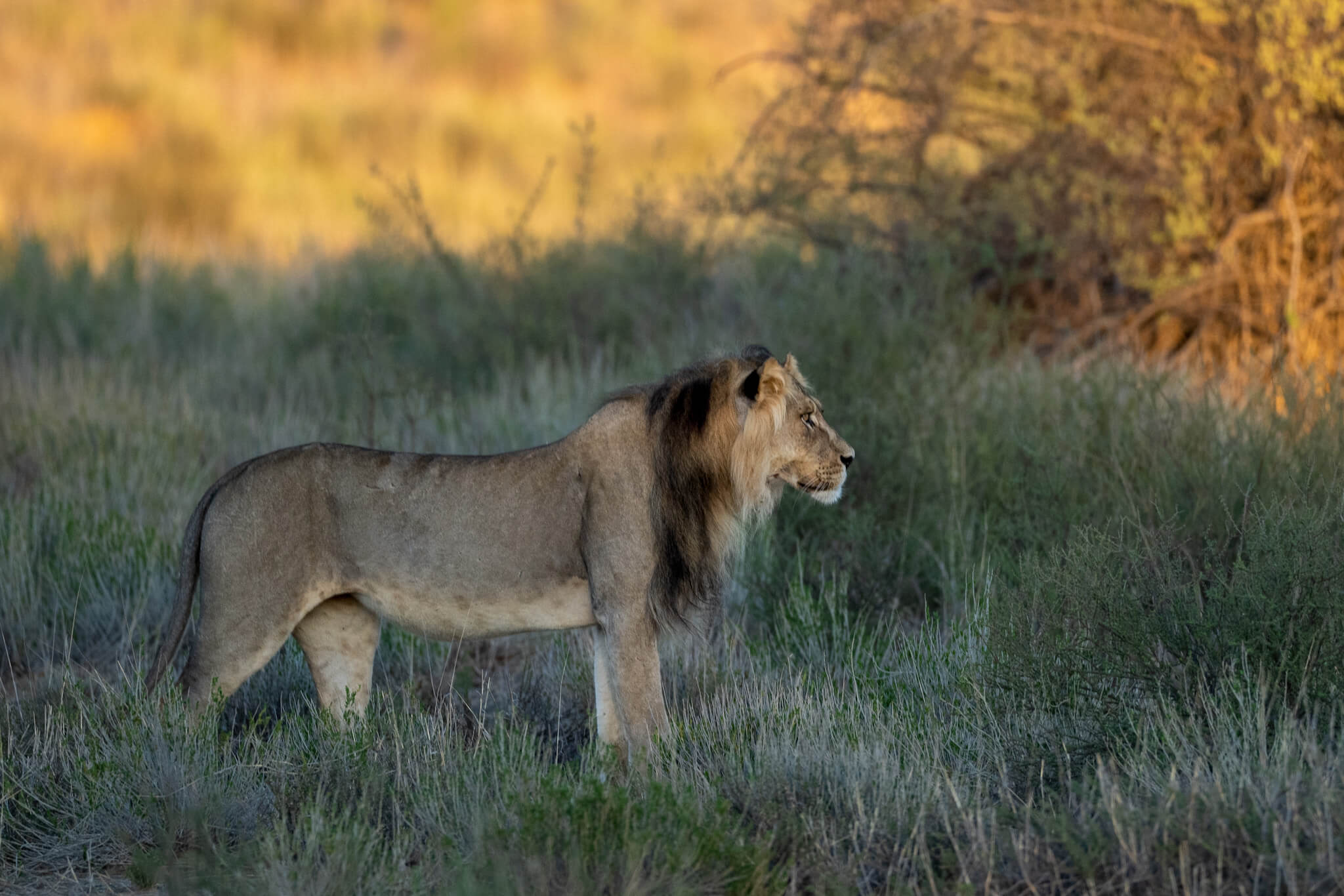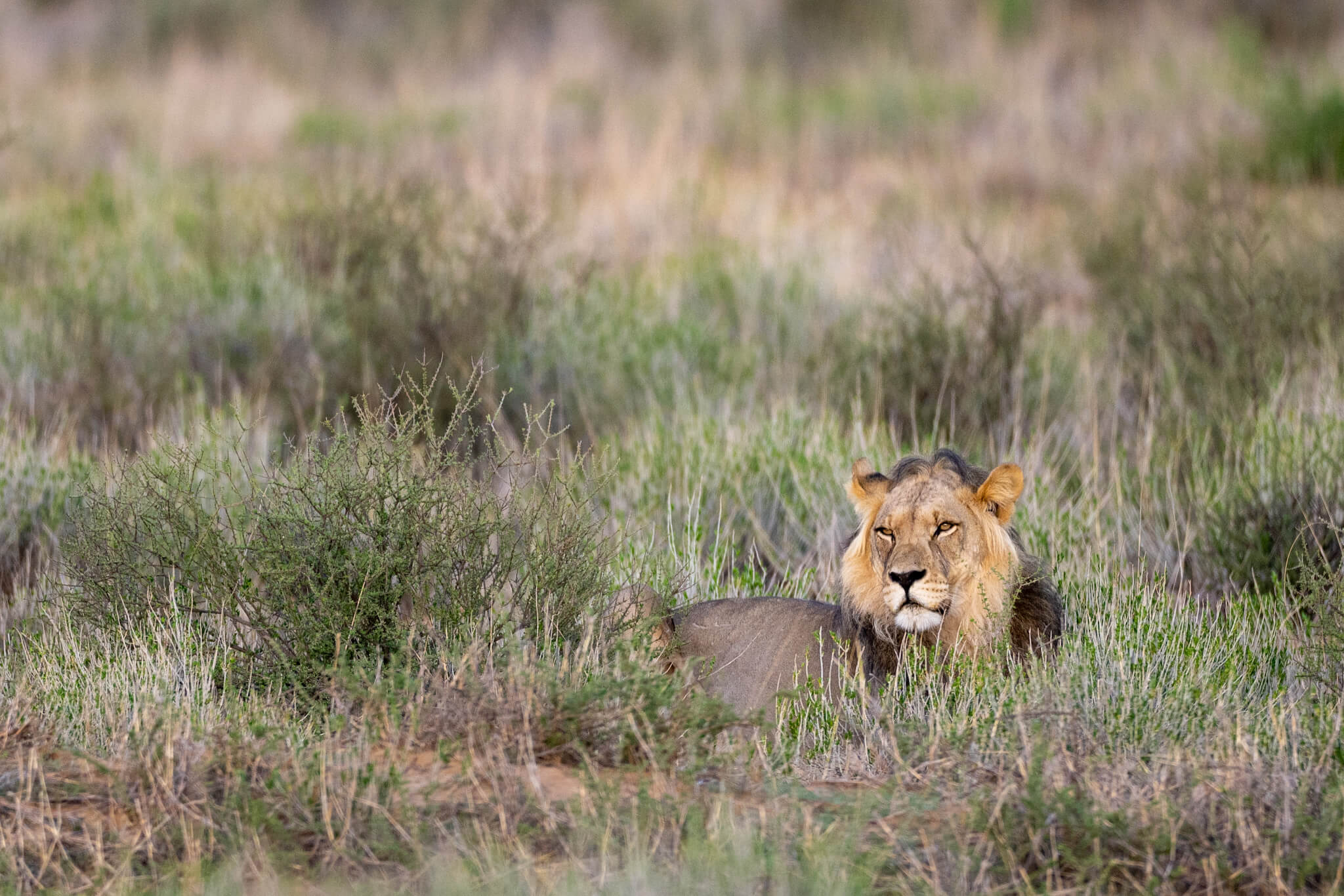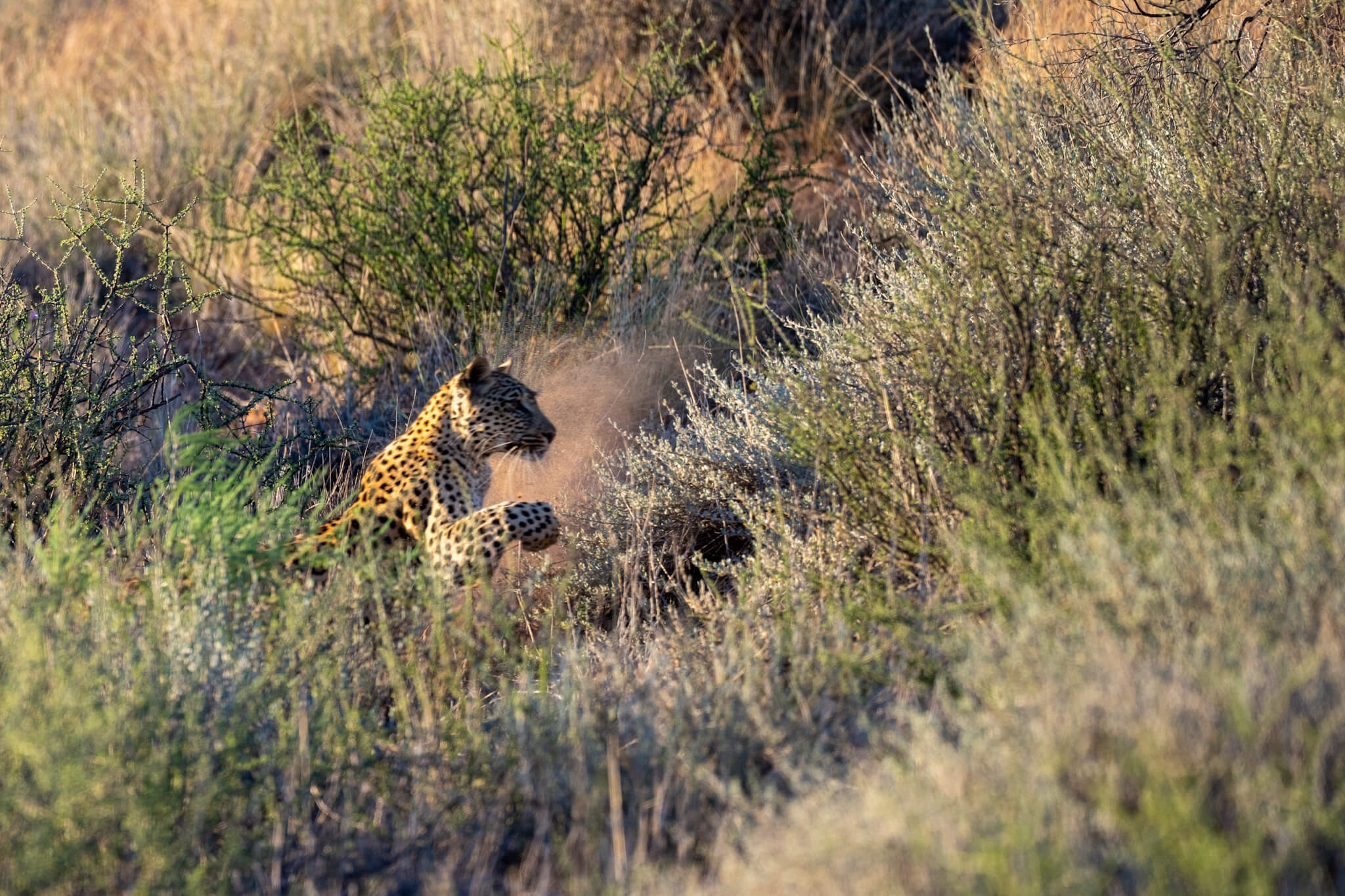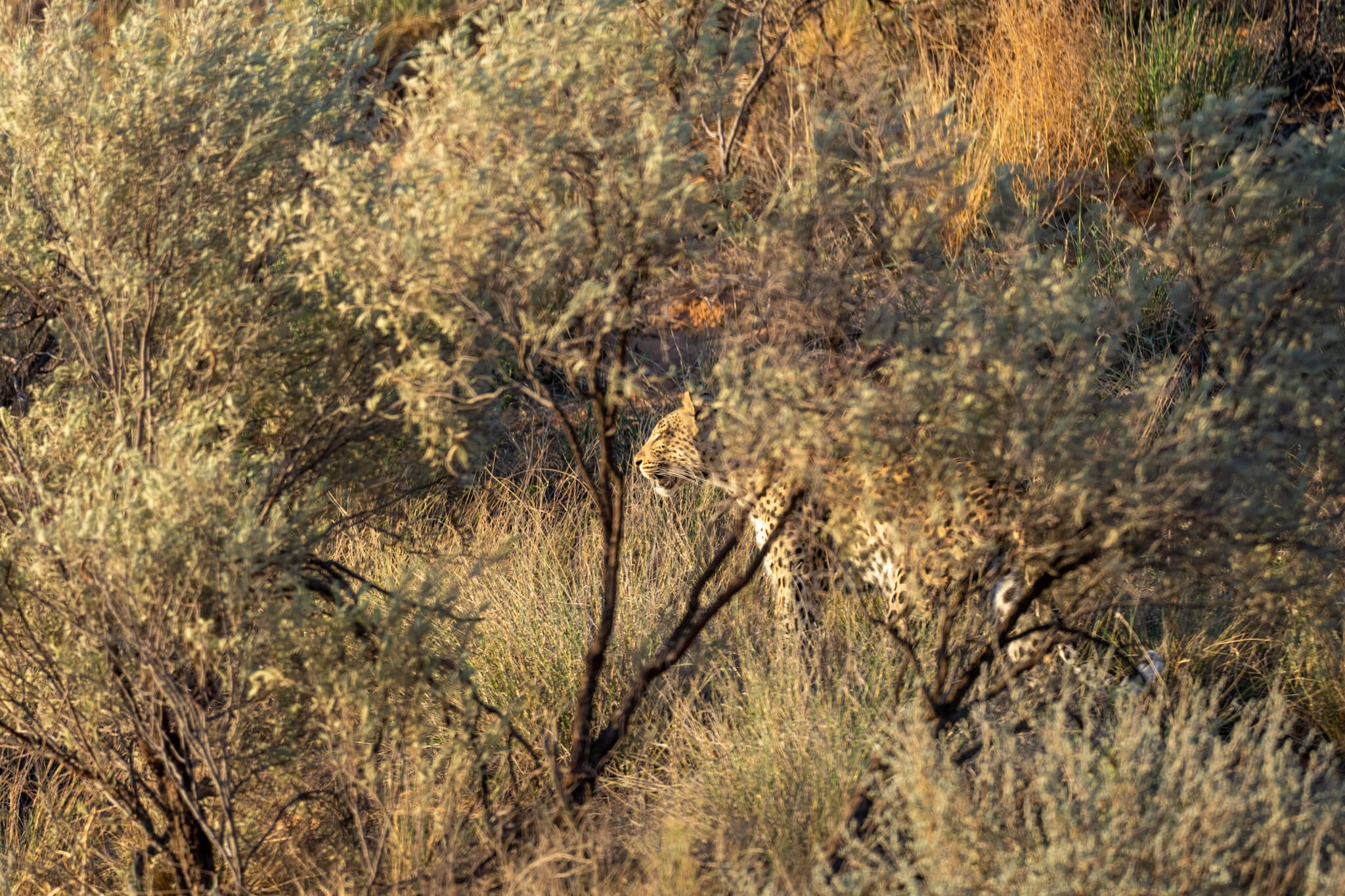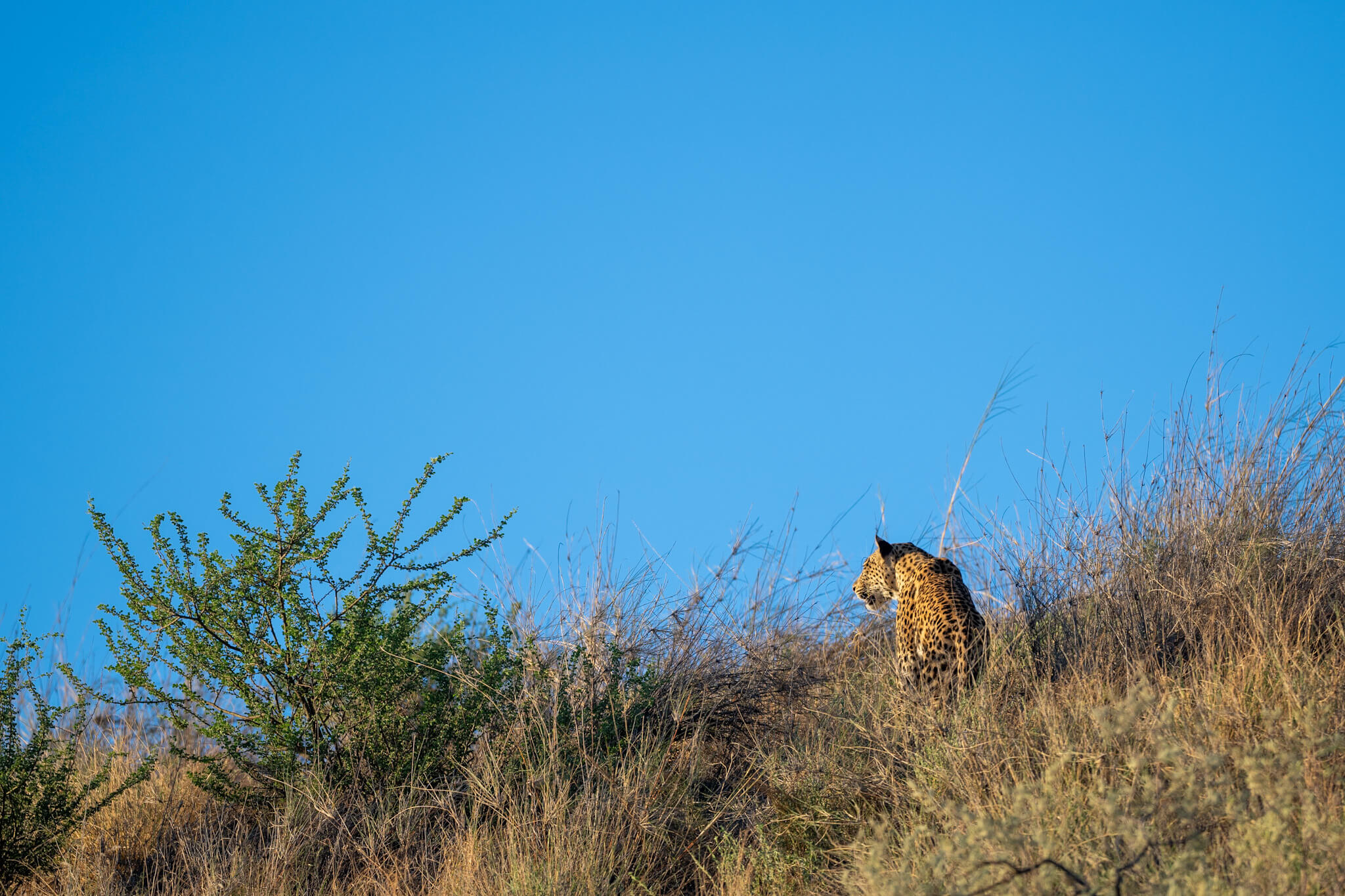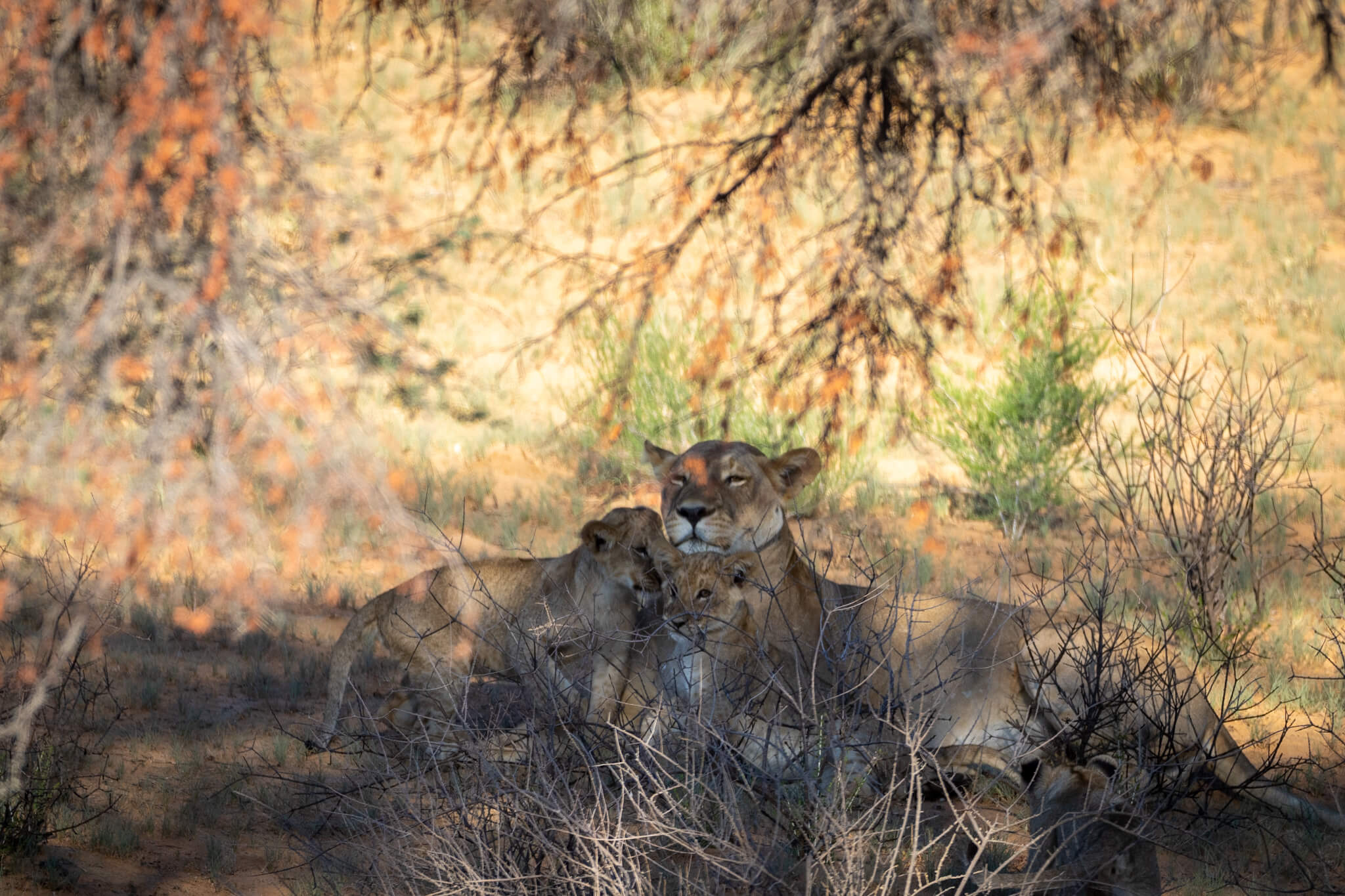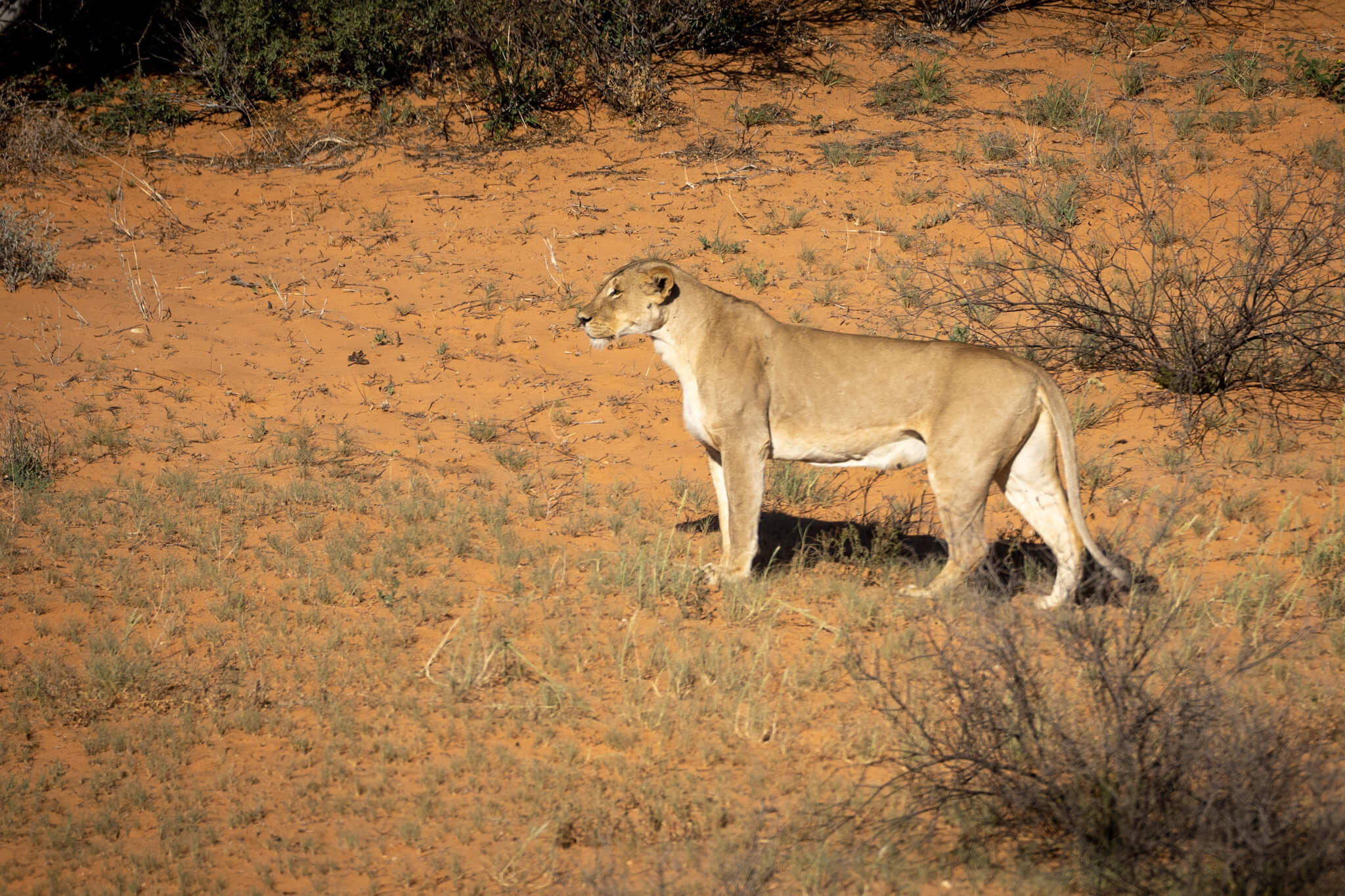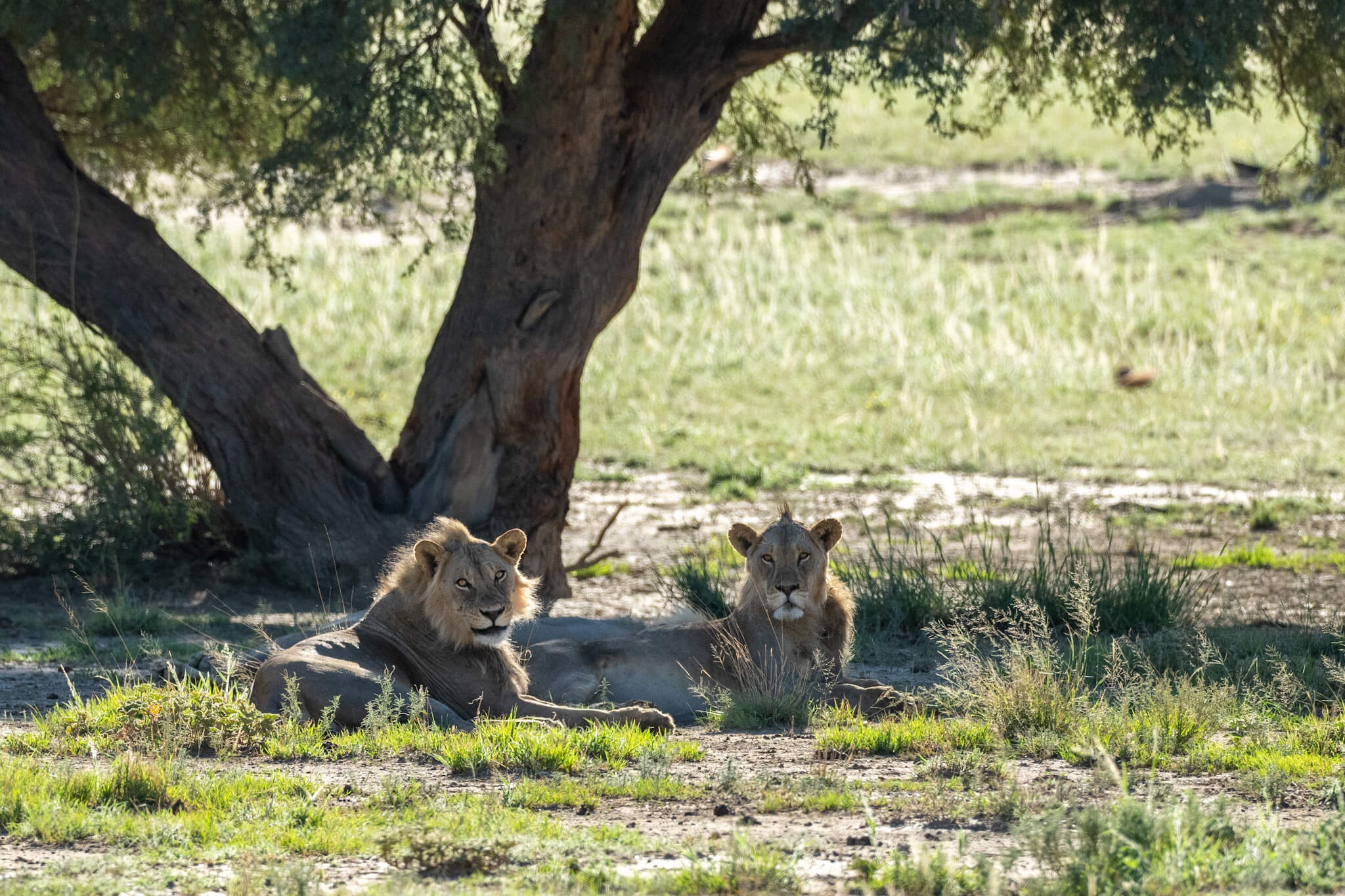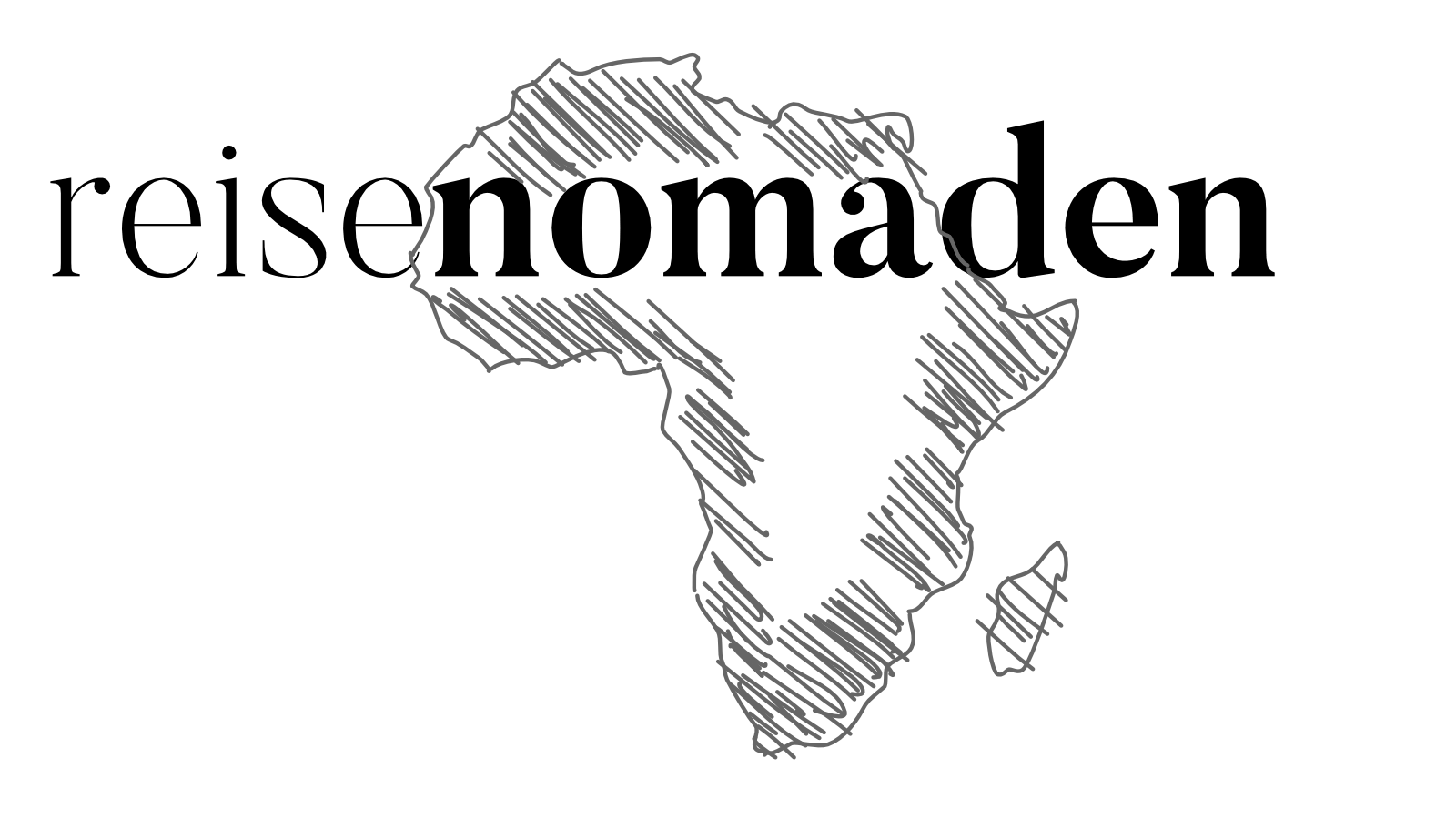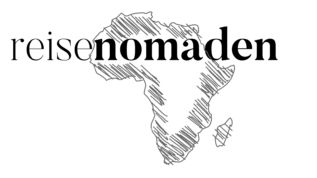We left Wildmoor at a decent time and drove quite relaxed the upcoming 200 km to Mata Mata Camp inside the Kgalagadi Transfrontier Park. The exit from Namibia was without complications. We had fun with the officials, laughed together and no one was interested in the fridge or similar. After 10 minutes we were out of the country. In Mata Mata it took a little longer, because Guido did not find his mail from the wildcard so quickly. The plastic card had not been valid for some time. There was a mail somewhere that contained a new number – that had to be found. After a systematic search through the mail folder, the mail came up and we could check in. During this time the South African policeman studied our papers and almost at the same time he gave the go ahead. He put on his cap and opened the barrier for us in a highly official manner. We were back in South Africa.
One of the cheetah brothers has been killed?!
We had booked Mata Mata for four nights. As expected, the camp was empty and was only used by a few retirees. Kgalagadi already proved to be very popular with retirees in the past – this has not changed. We met a Swiss couple who were on their way to Twee Rivieren and spent the lunch time in Mata Mata. The lady told us that of the four cheetah brothers we had so successfully observed in June, one had fallen victim to a lion attack. This was bad news and Guido decided not to believe it until he had seen it for himself. There is an incredible amount of talk in parks and many times it is just hearsay.
Our first game drive in the afternoon was very quiet. We drove the various water holes and returned to camp after about 2 1/2 hours. In the dry riverbed, a few minutes from camp, the cheetah brothers were lying on the road as a road block. At least two of them were. Another one was to the left of the road. Then Guido started to grin. The eyes laughed, because: The fourth cheetah was sitting comfortably in the grass on the right side. So there was nothing to the rumors. The four were in an extremely strong and healthy condition – they were apparently doing very well, but see for yourself.
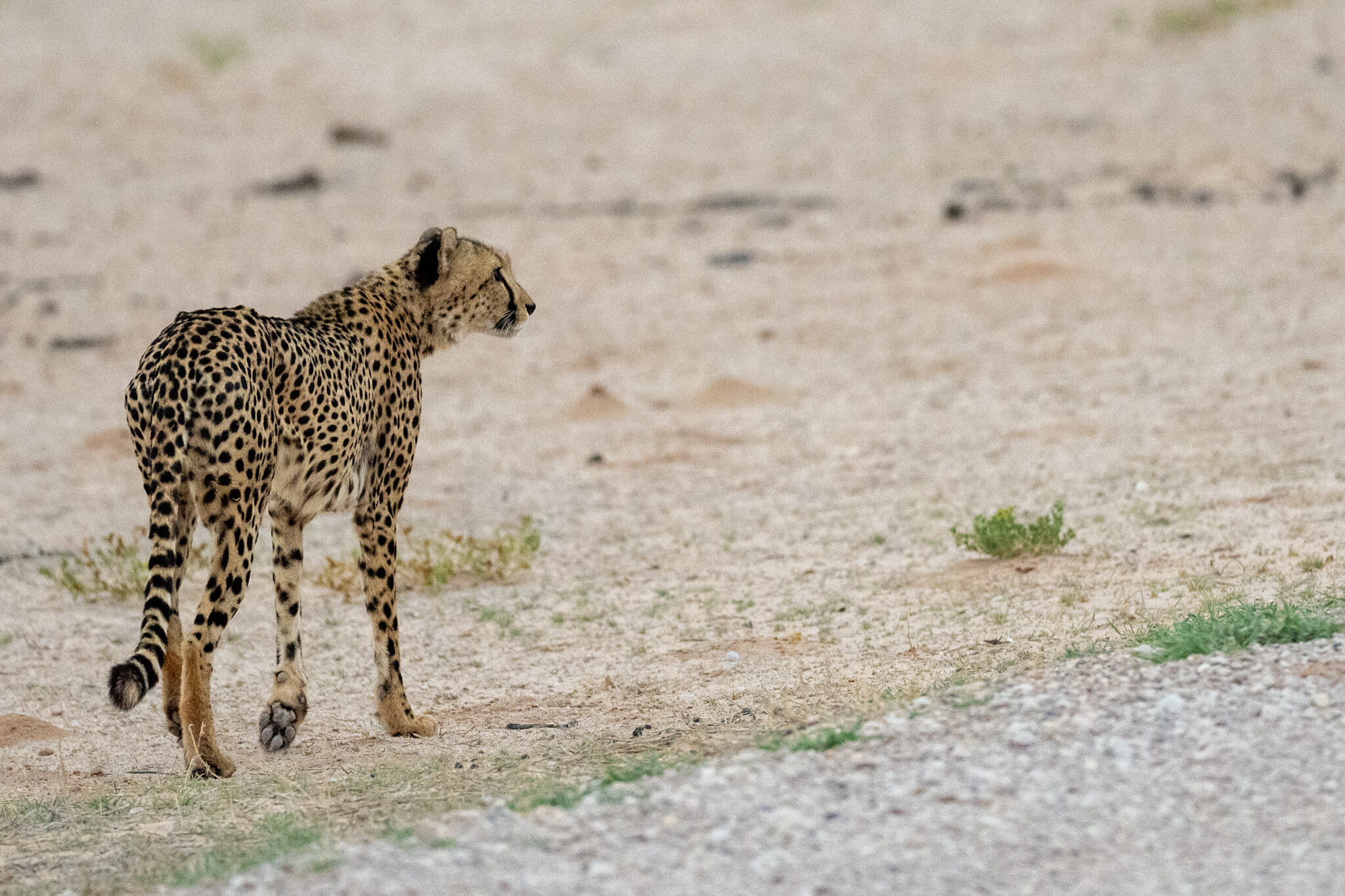
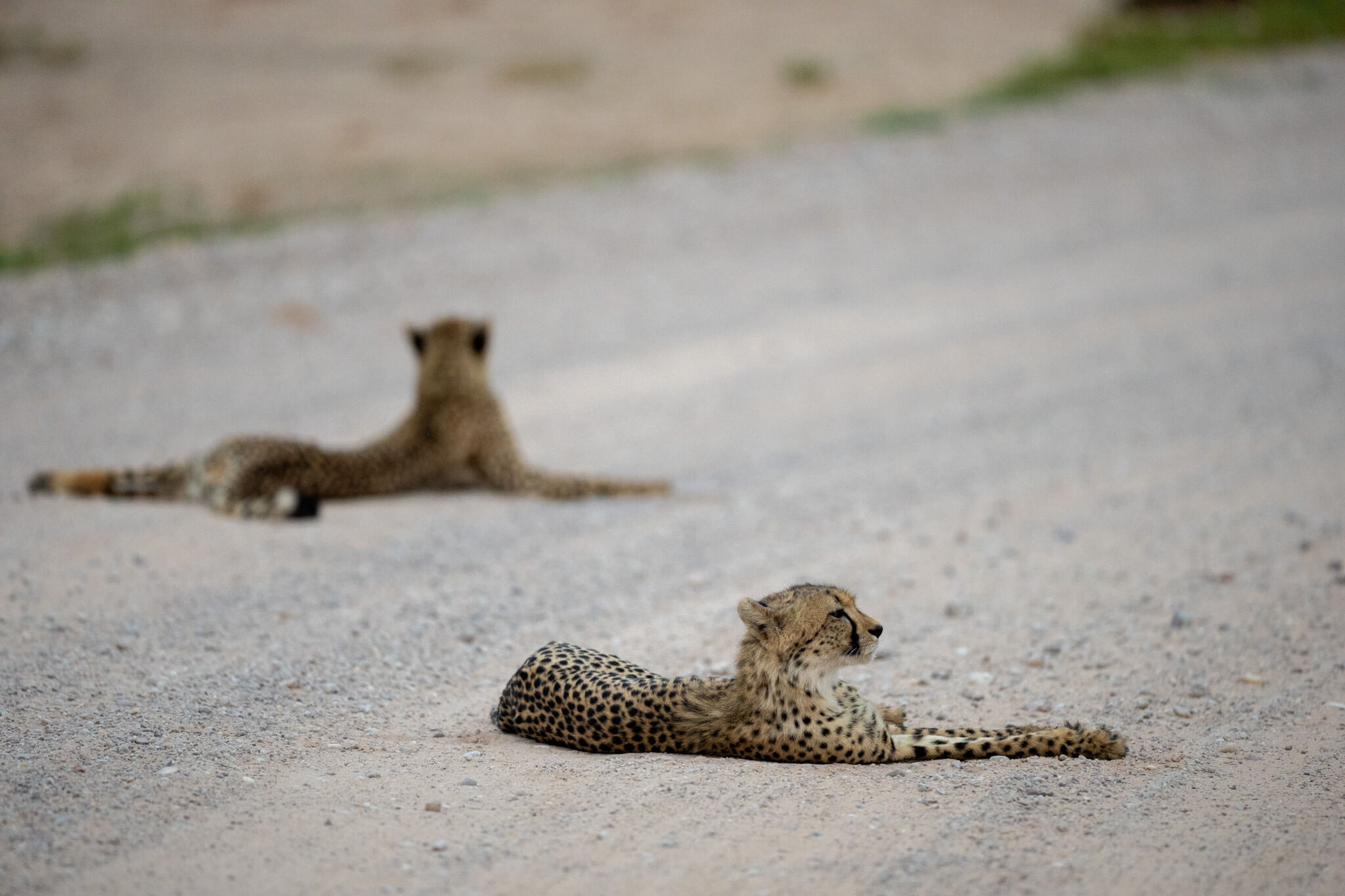
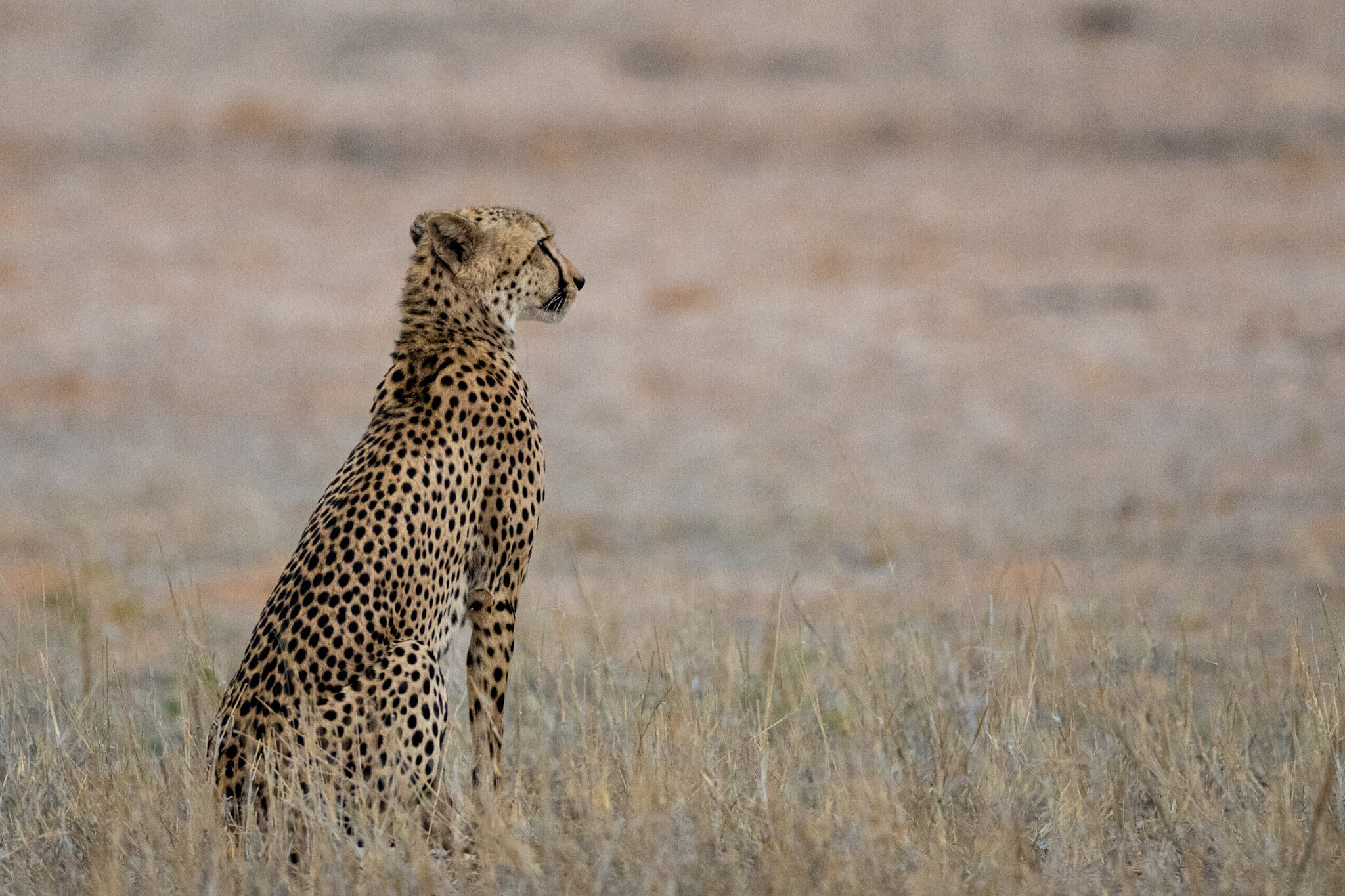
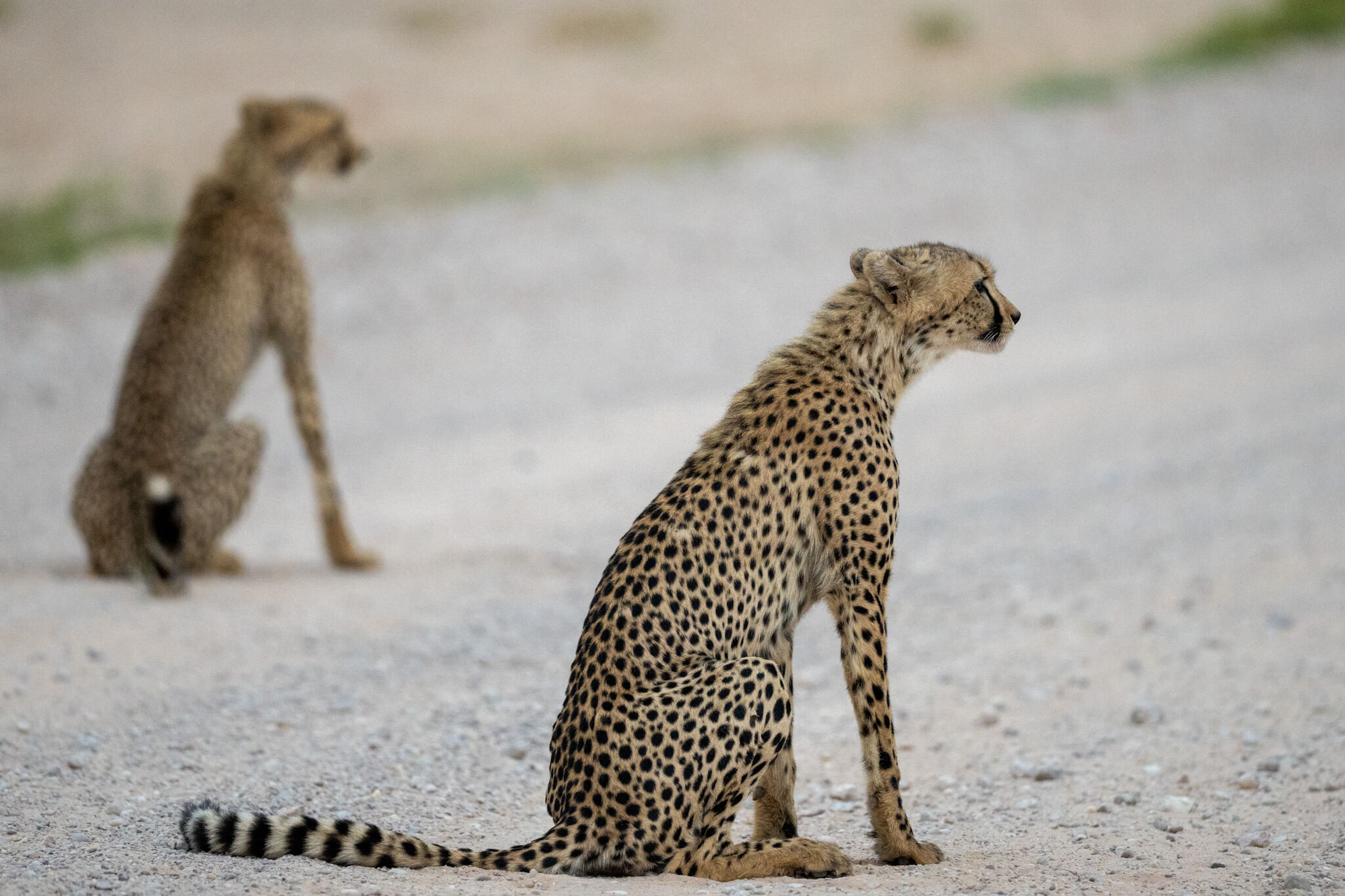
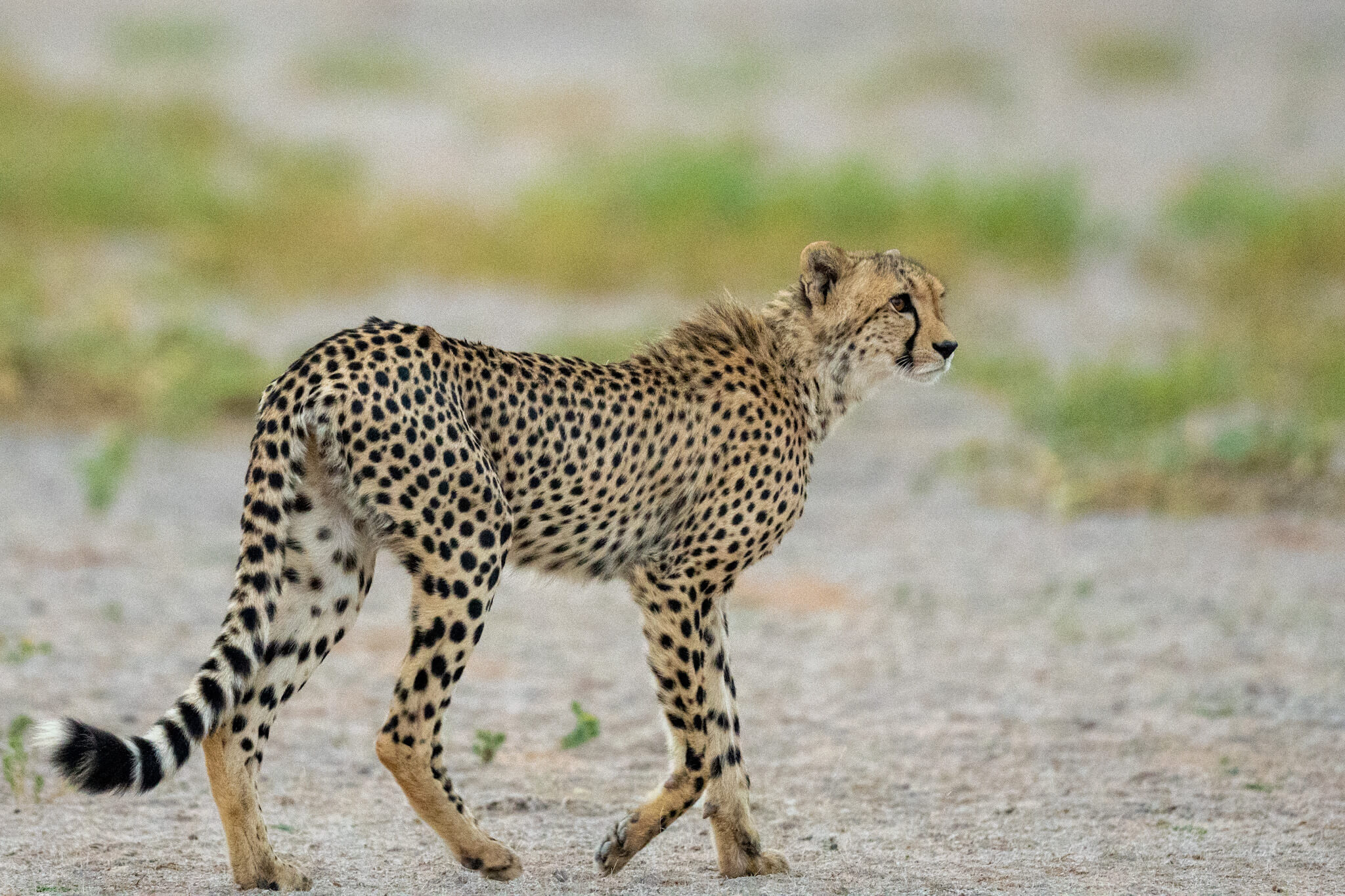
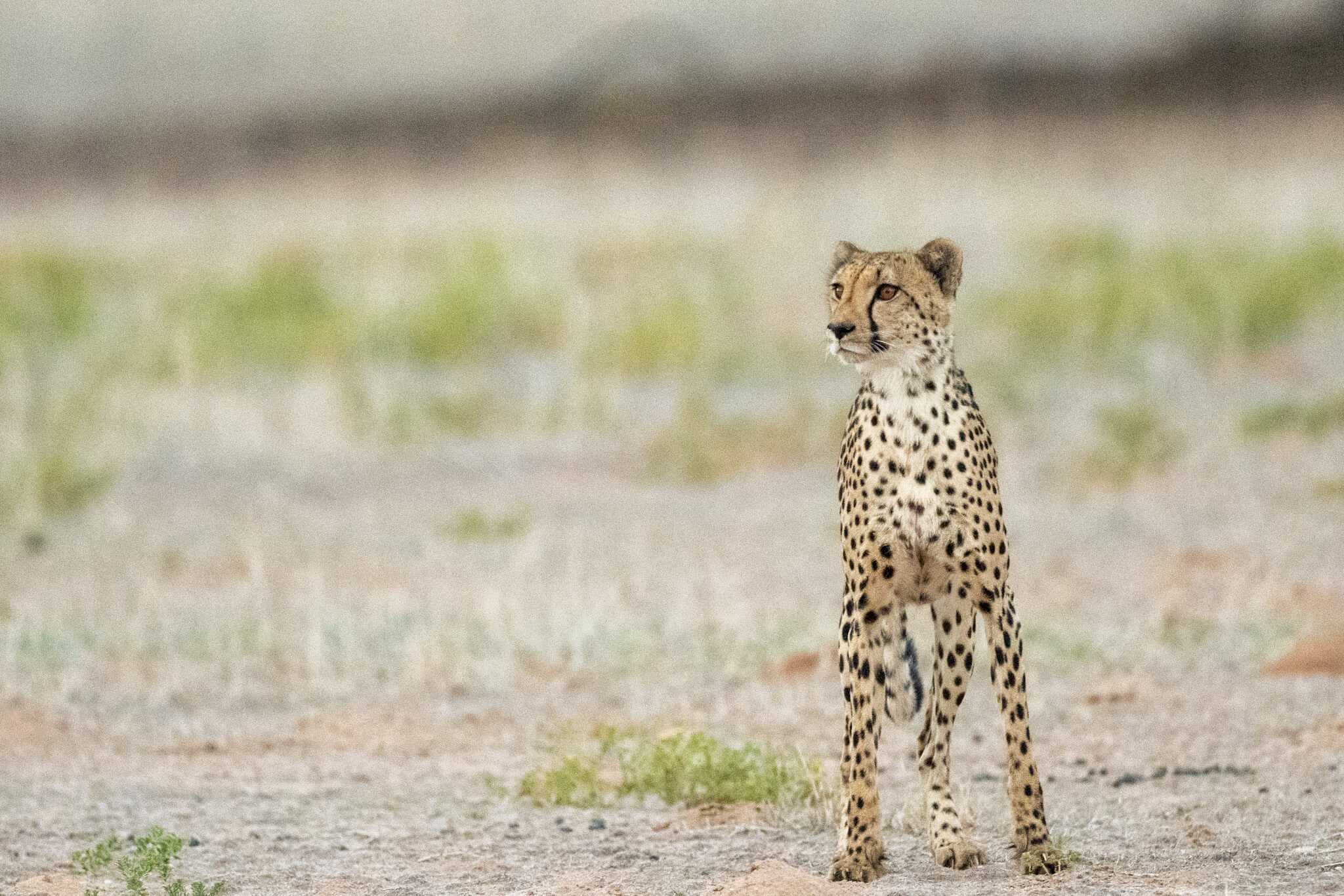
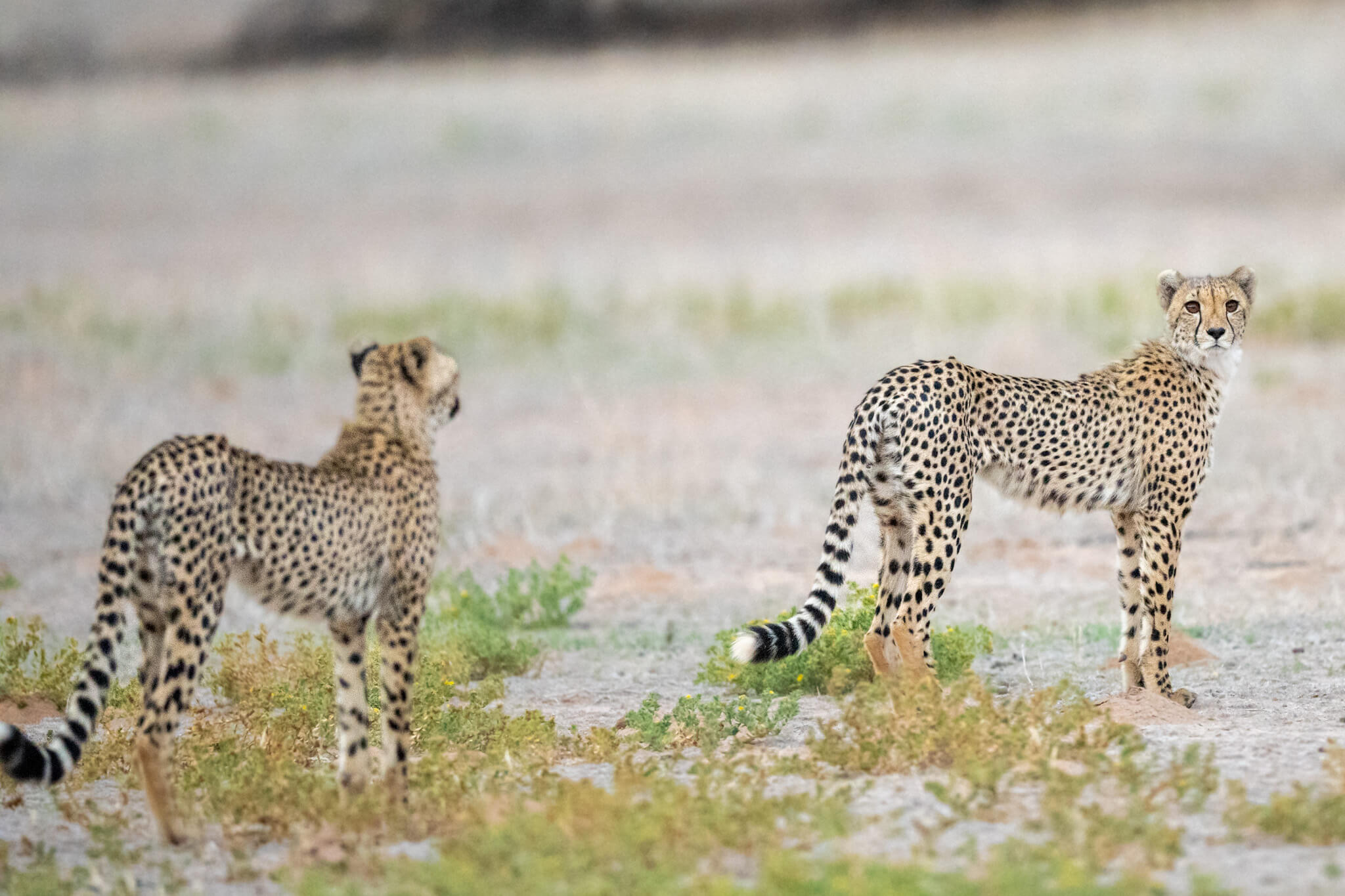
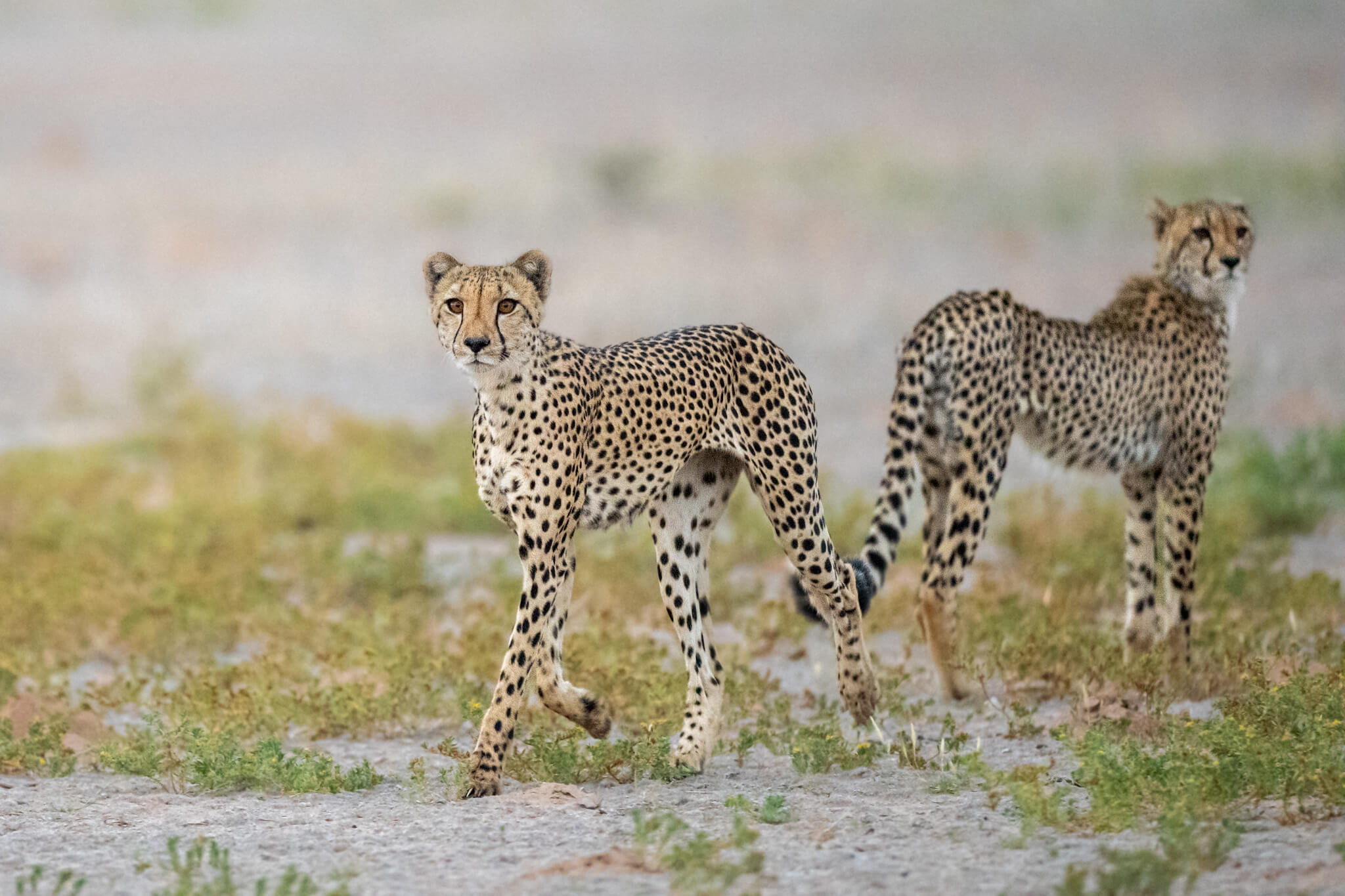
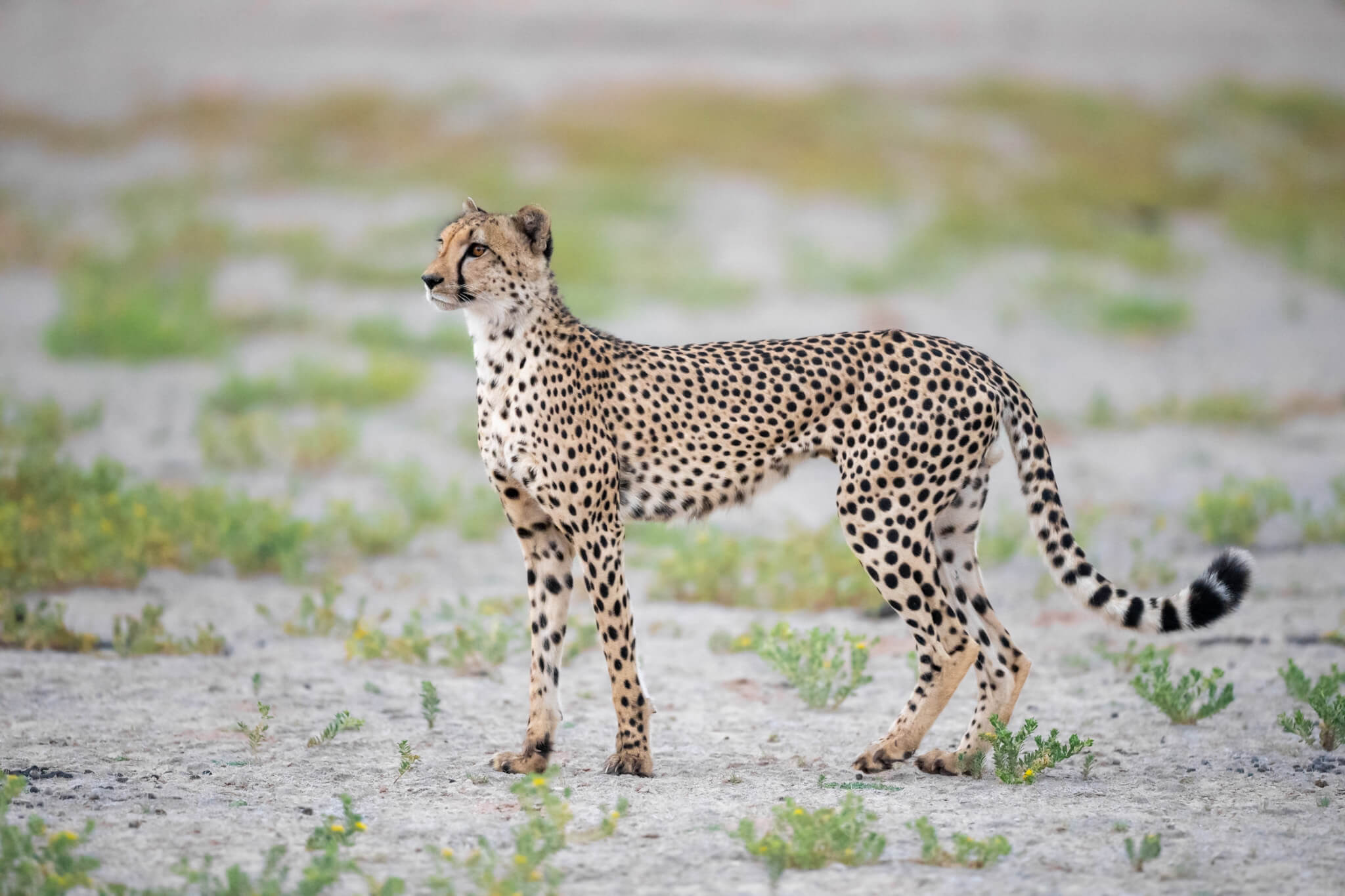
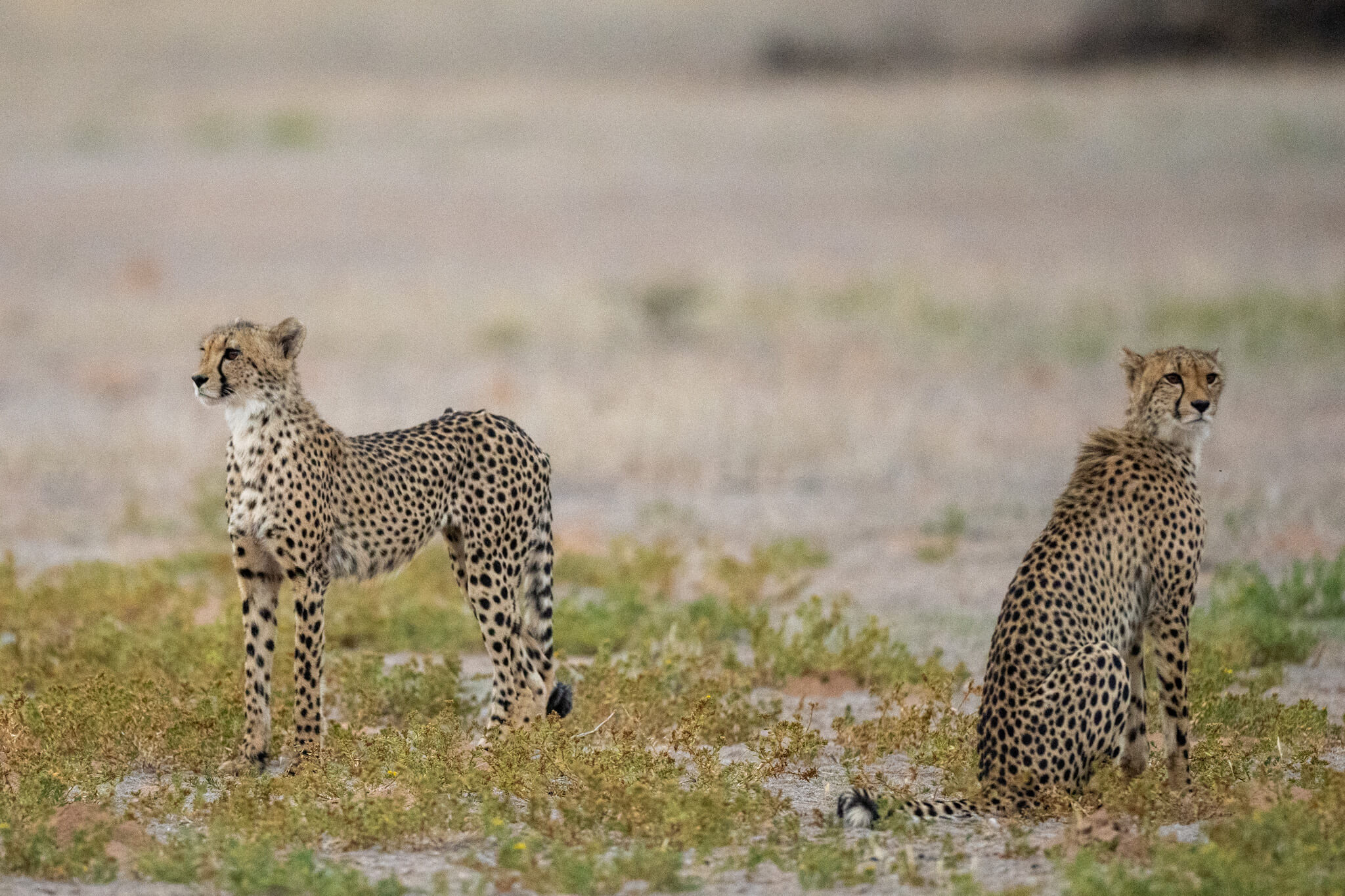
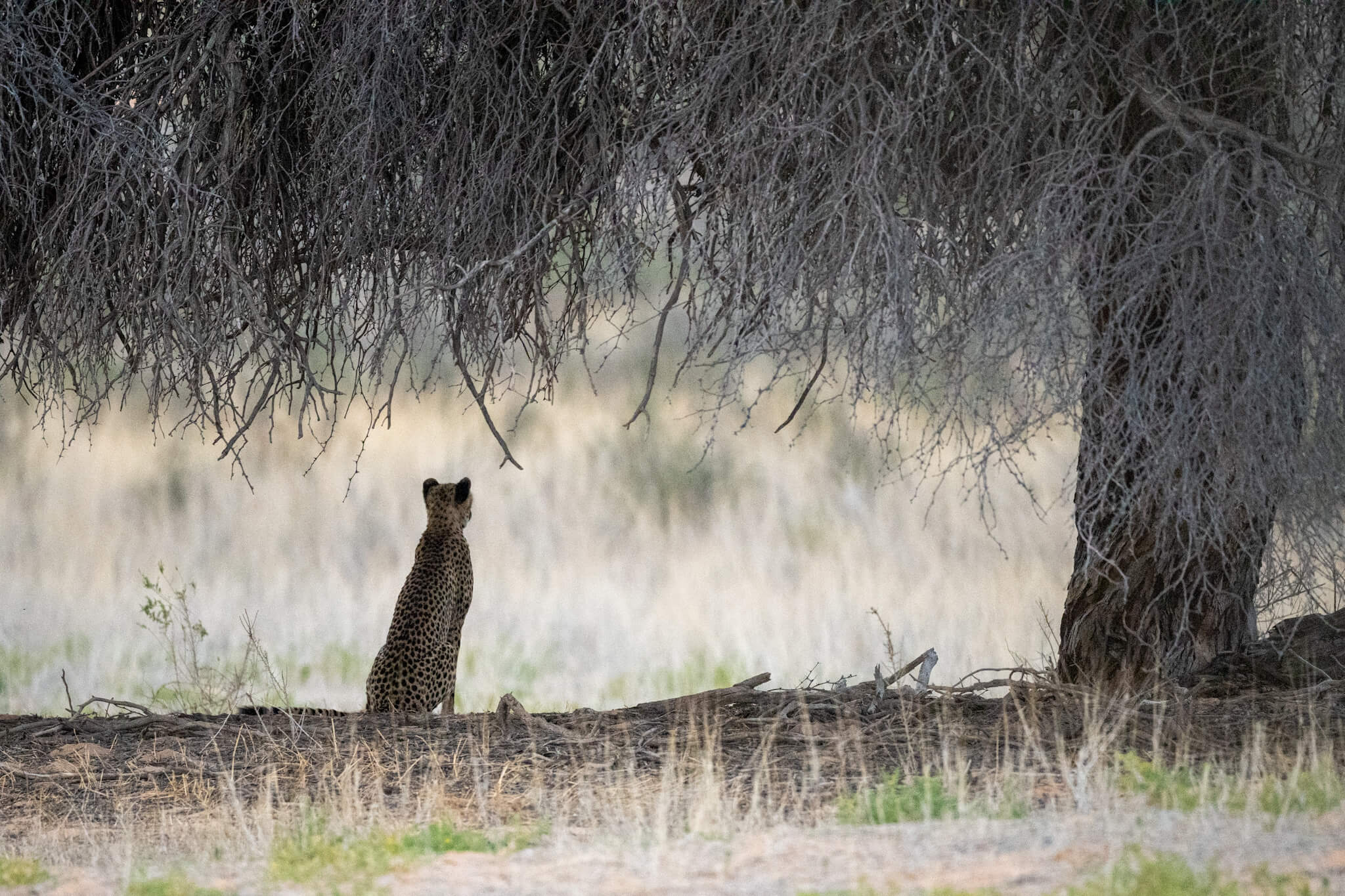
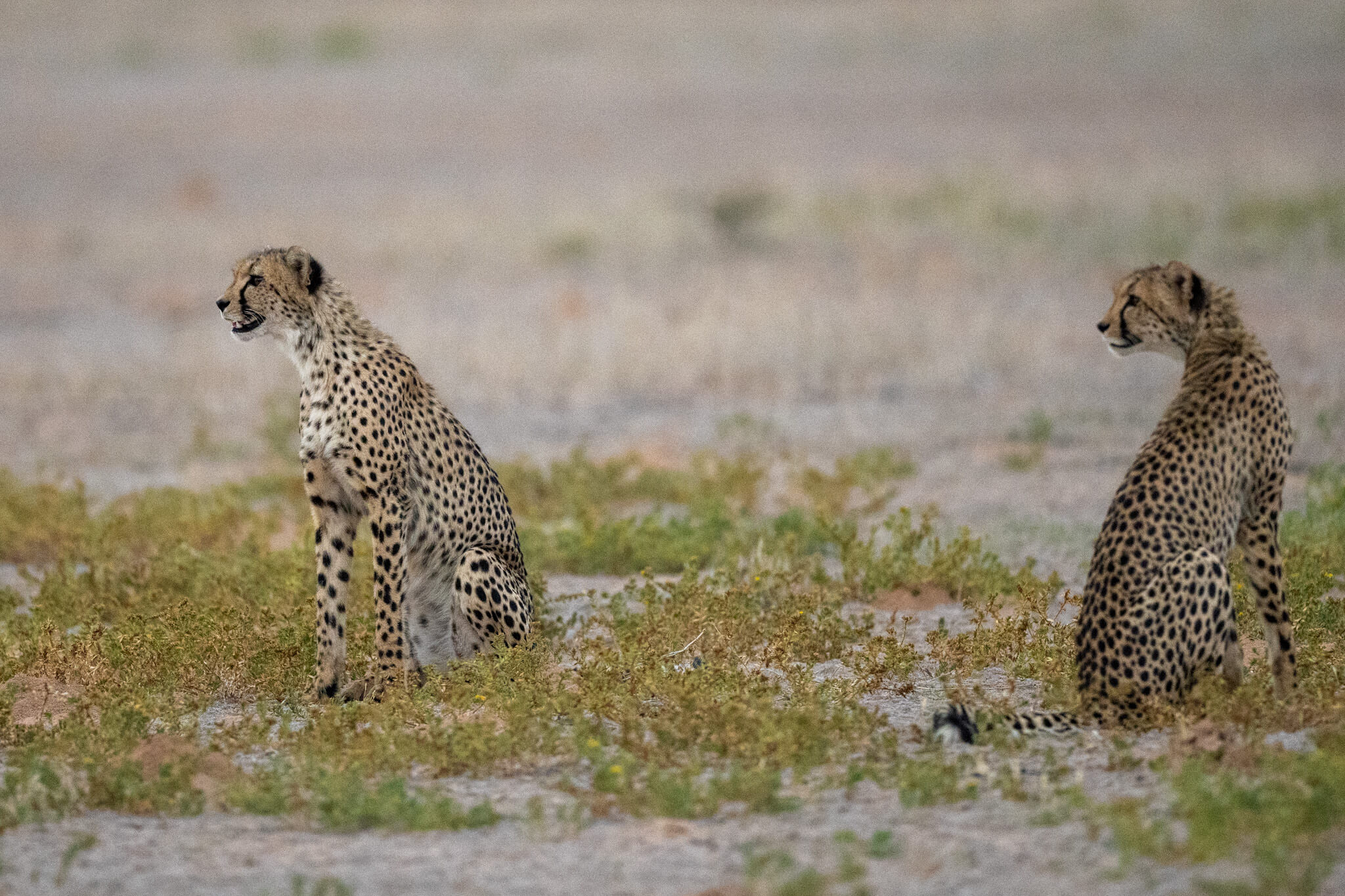
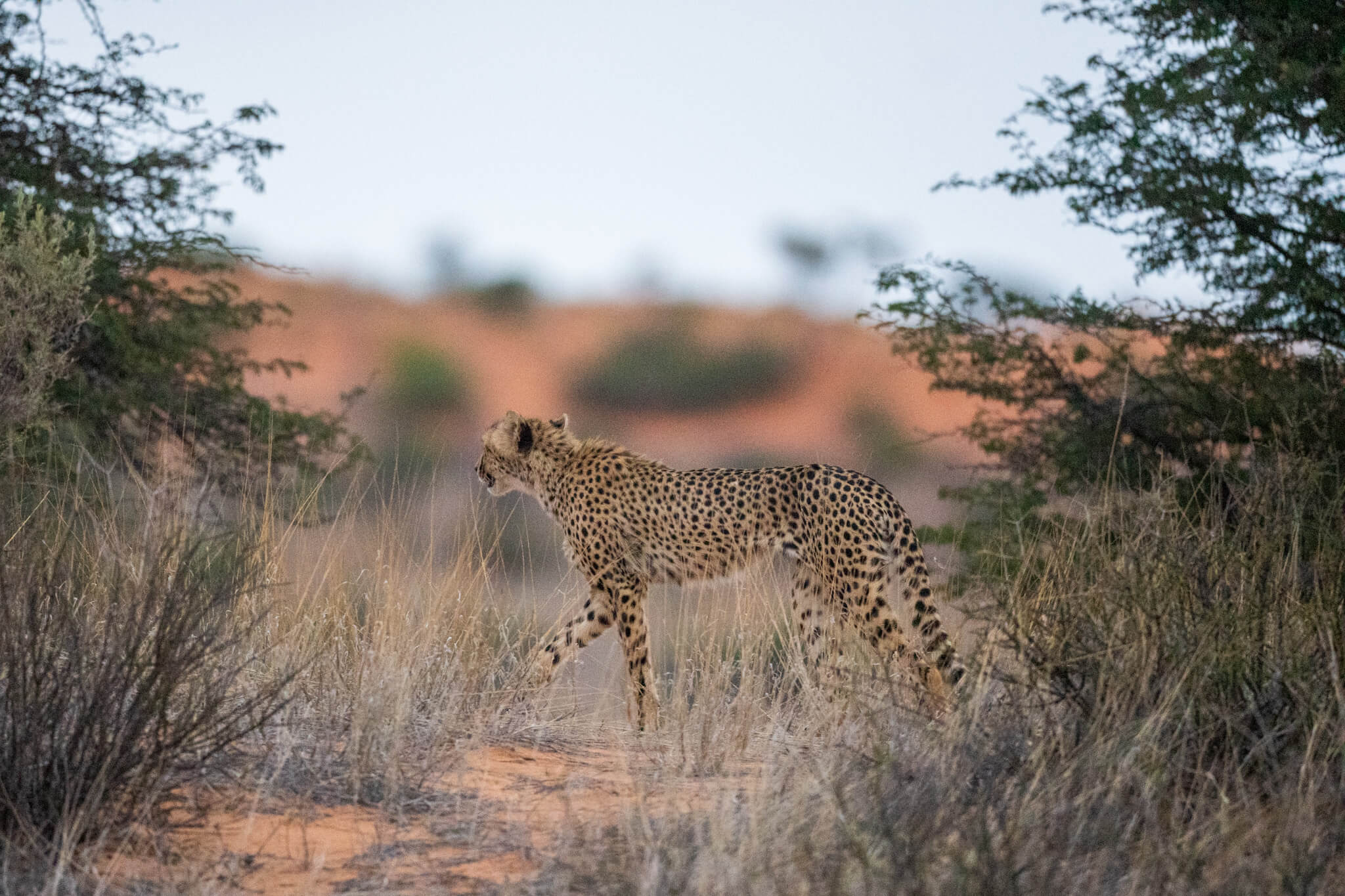
Mata Mata has the next highlight in store for us
The morning drive on the second day was just as smooth as the evening drive the day before. One of the biggest drawbacks in Kgalagadi is that you are only allowed to drive on one road that runs along the riverbed. There is no depth and no turnoff. It was yet to be seen how influential this design really is. This second drive held a special surprise for us:
In a large fallen tree a small African wild cat was playing. An animal that is normally very shy and extremely rarely observed. Since traveling Africa, we have only seen one once for about 2 seconds in the KTP on the Botswana side and another in Kgalagadi, on the way from Twee Rivieren to Nossob. It was two powerful leaps across the road and she was gone. This time everything was different. The young kitten was playing on the tree stump and its mother was stretched out in the thicket, watching the scenery in a relaxed manner. We could hardly believe our luck!
In the afternoon we drove past this tree again and were lucky enough to be able to observe them in the open field. A leopard tortoise approached and Guido hoped for a meeting between the tortoise and the kitten. Unfortunately, this wish did not come true, but we enjoyed the time with the two and unavoidably thought of Fridolin and Lilly, our two house tigers, which we had to leave behind.
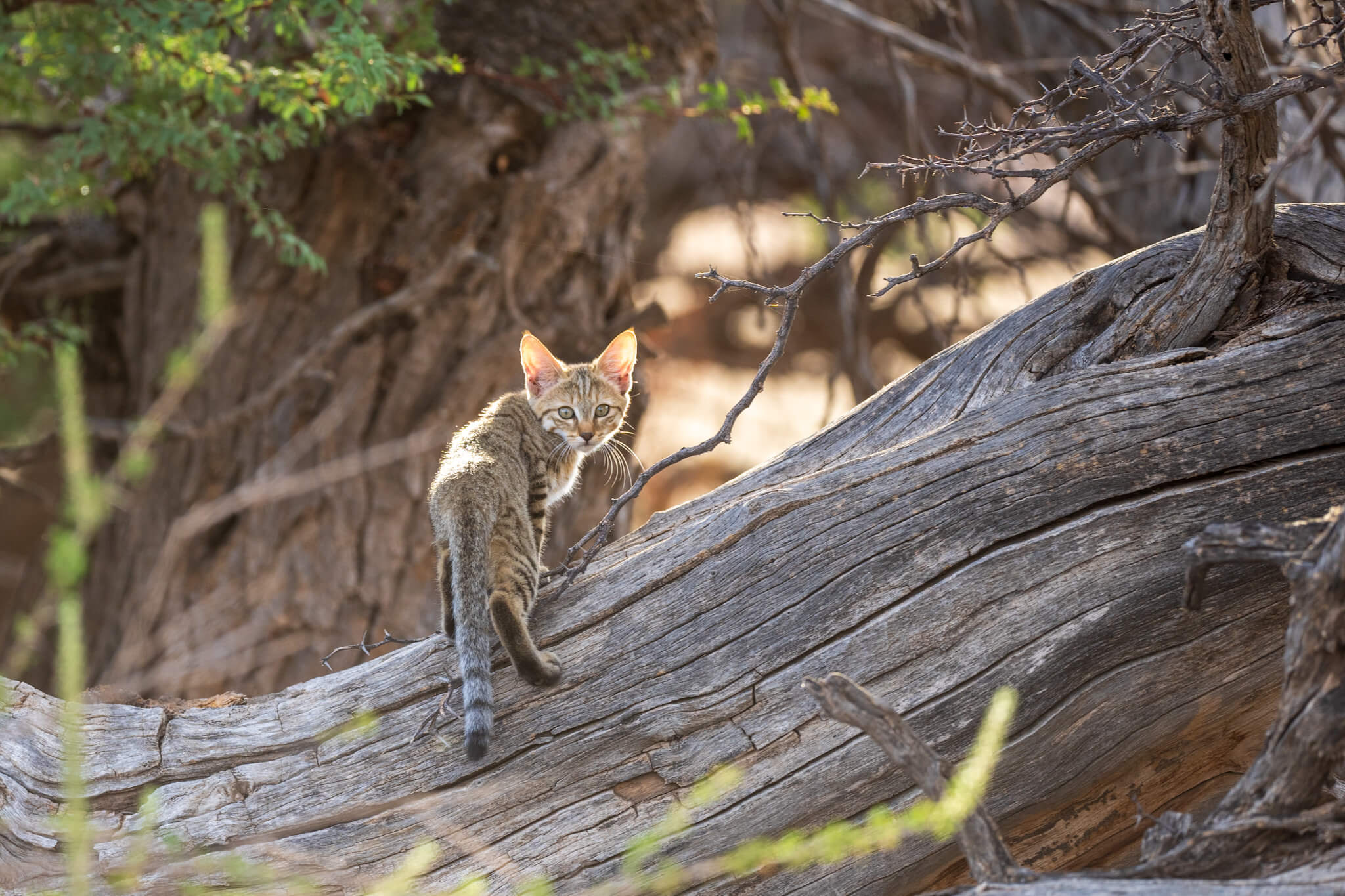
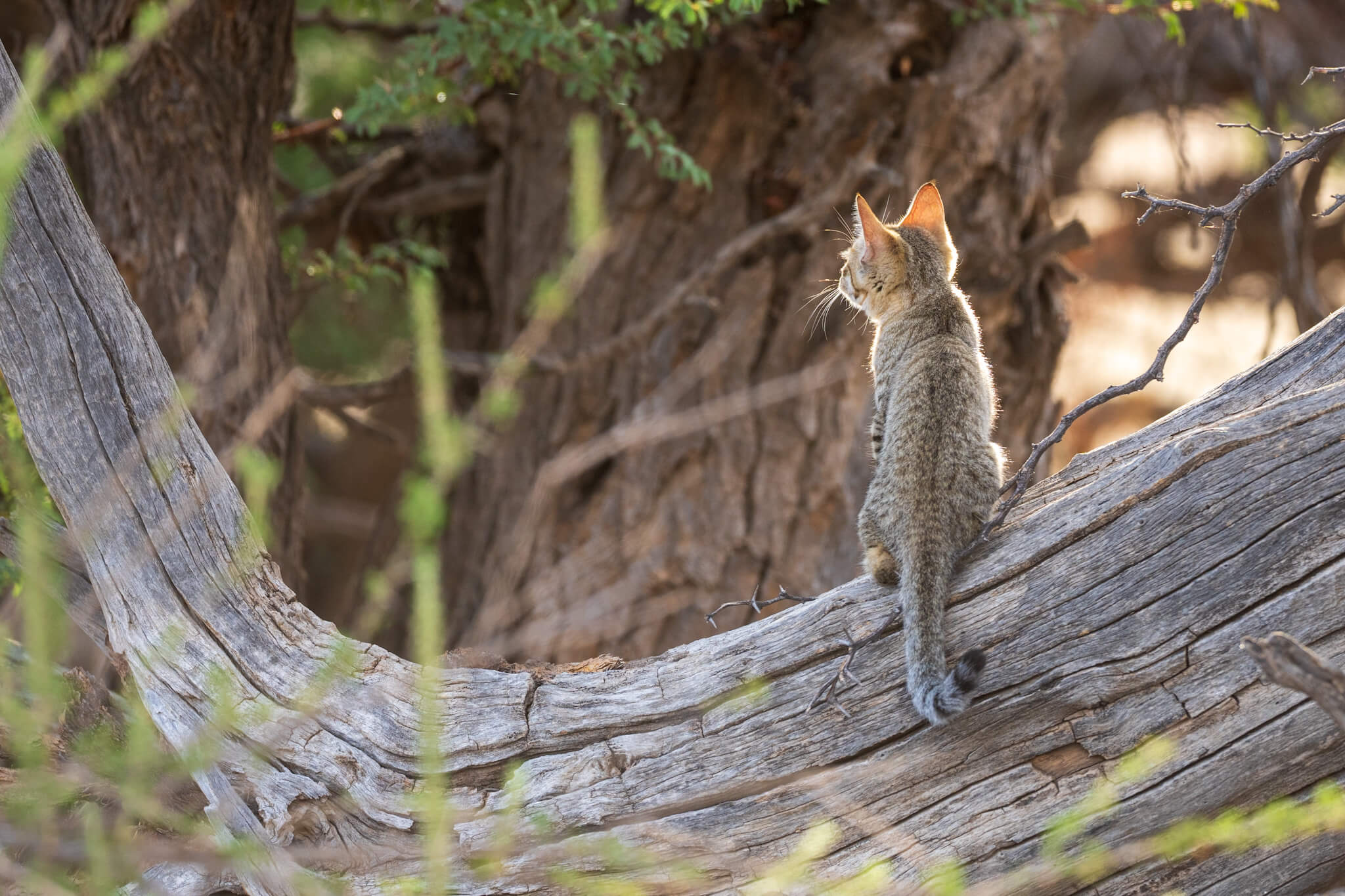
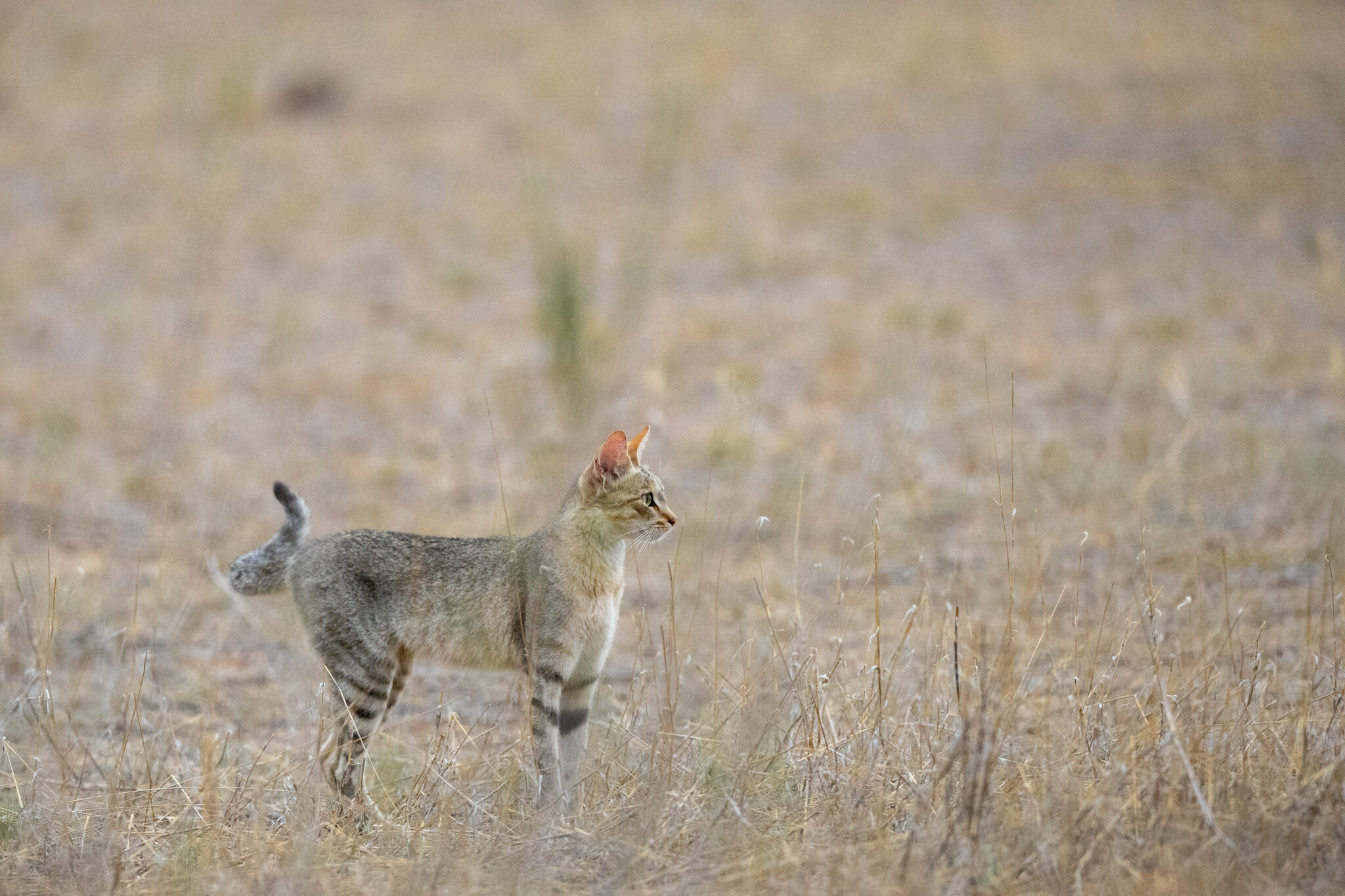
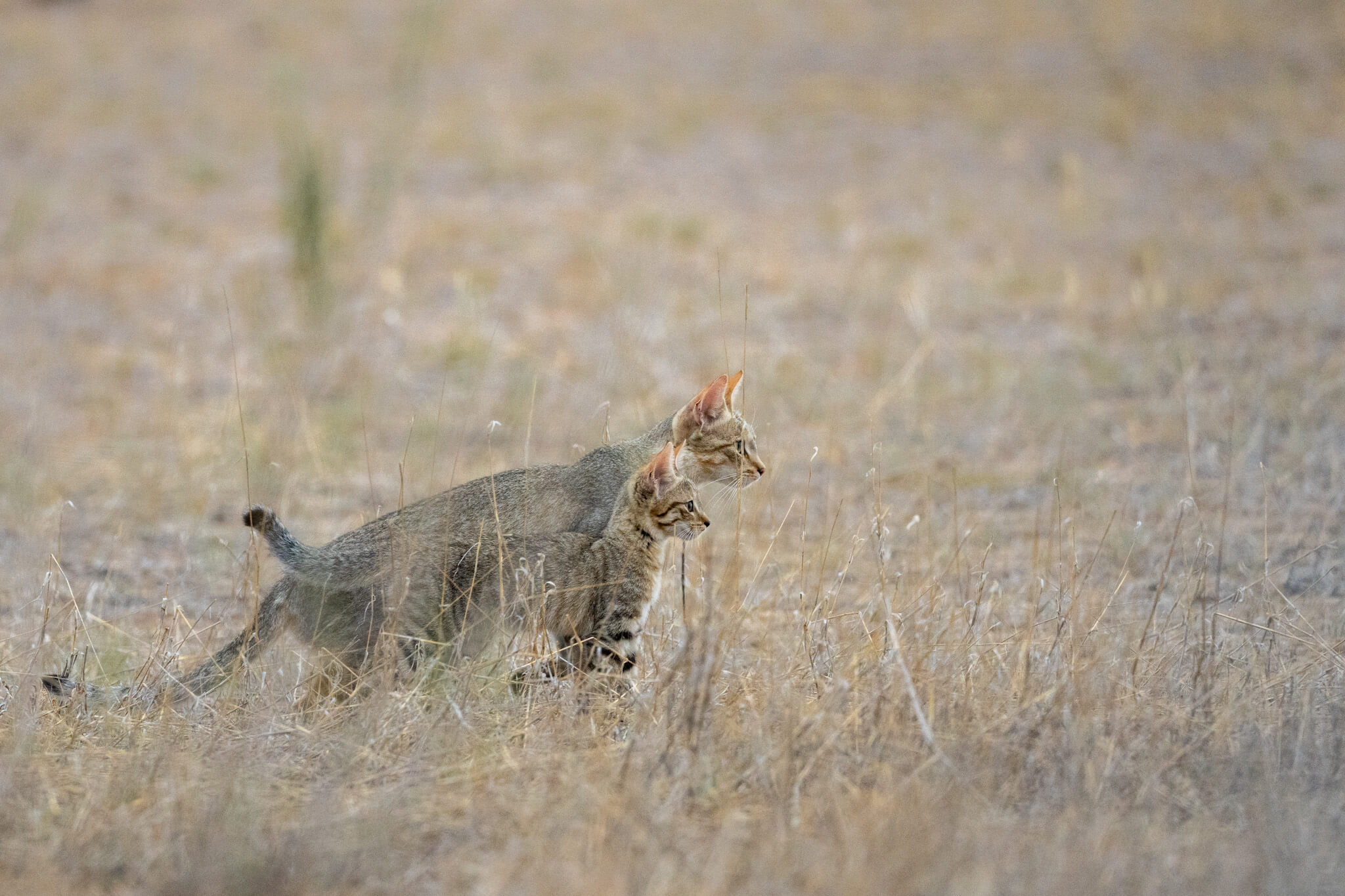
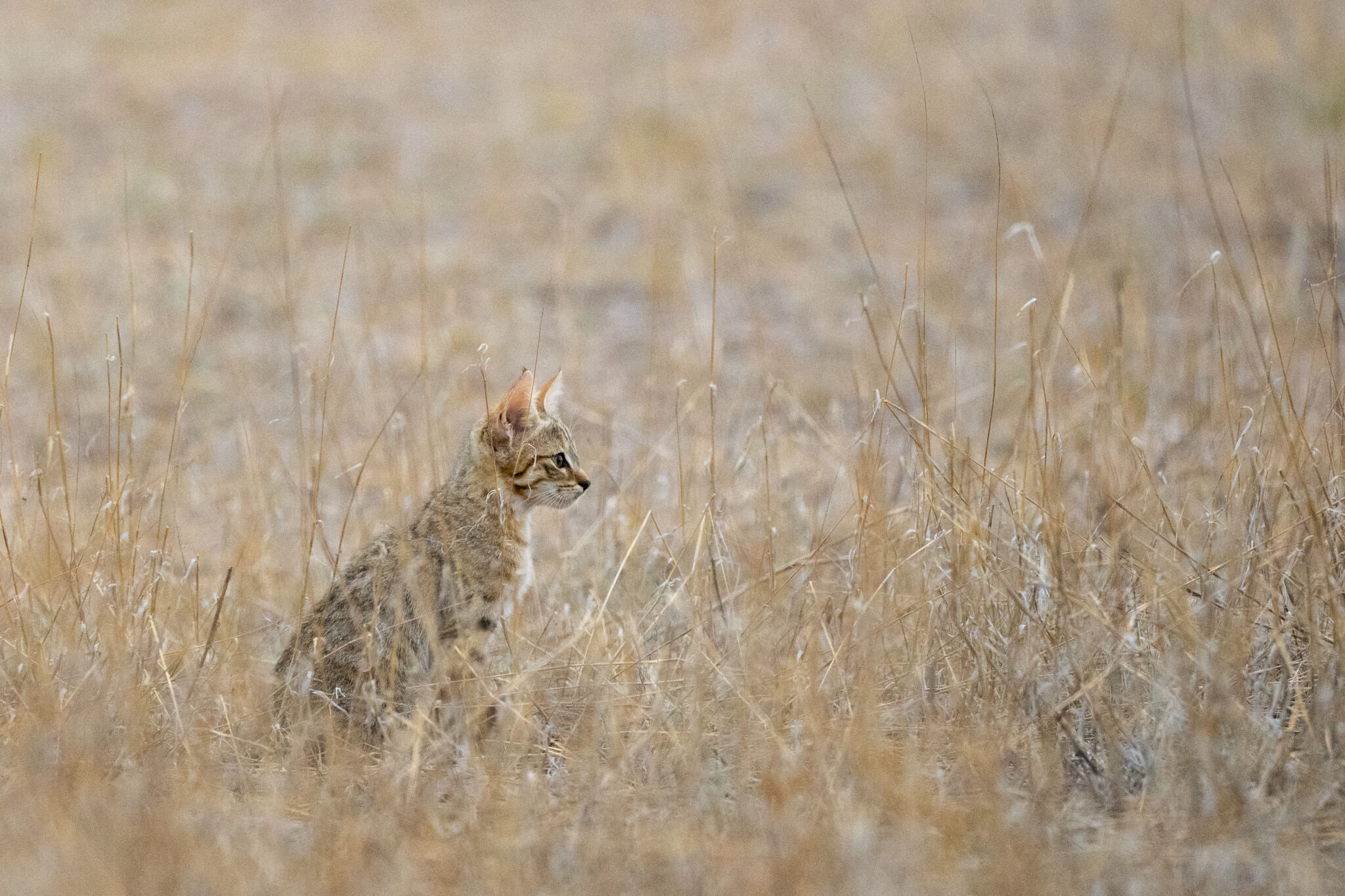
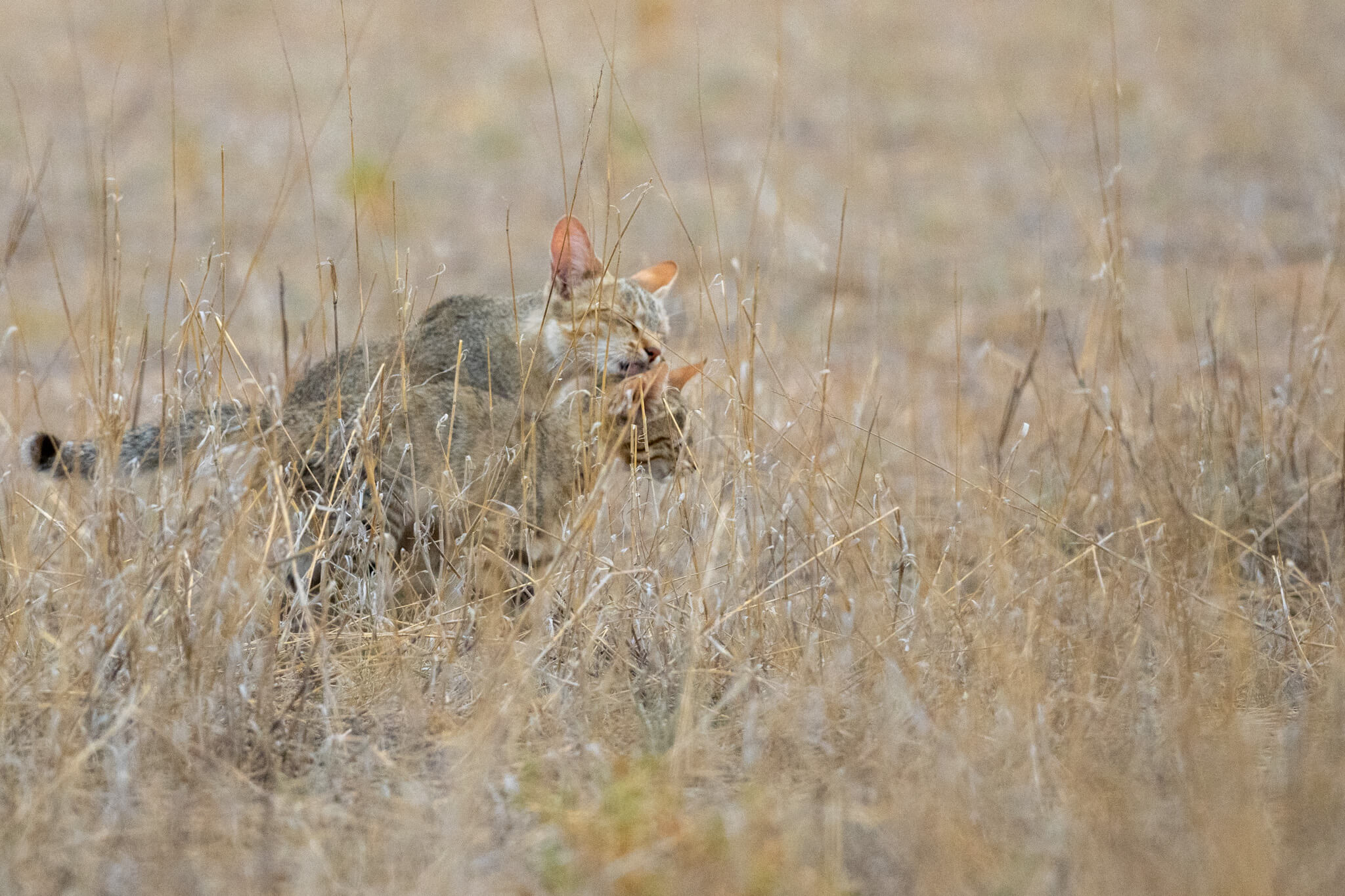
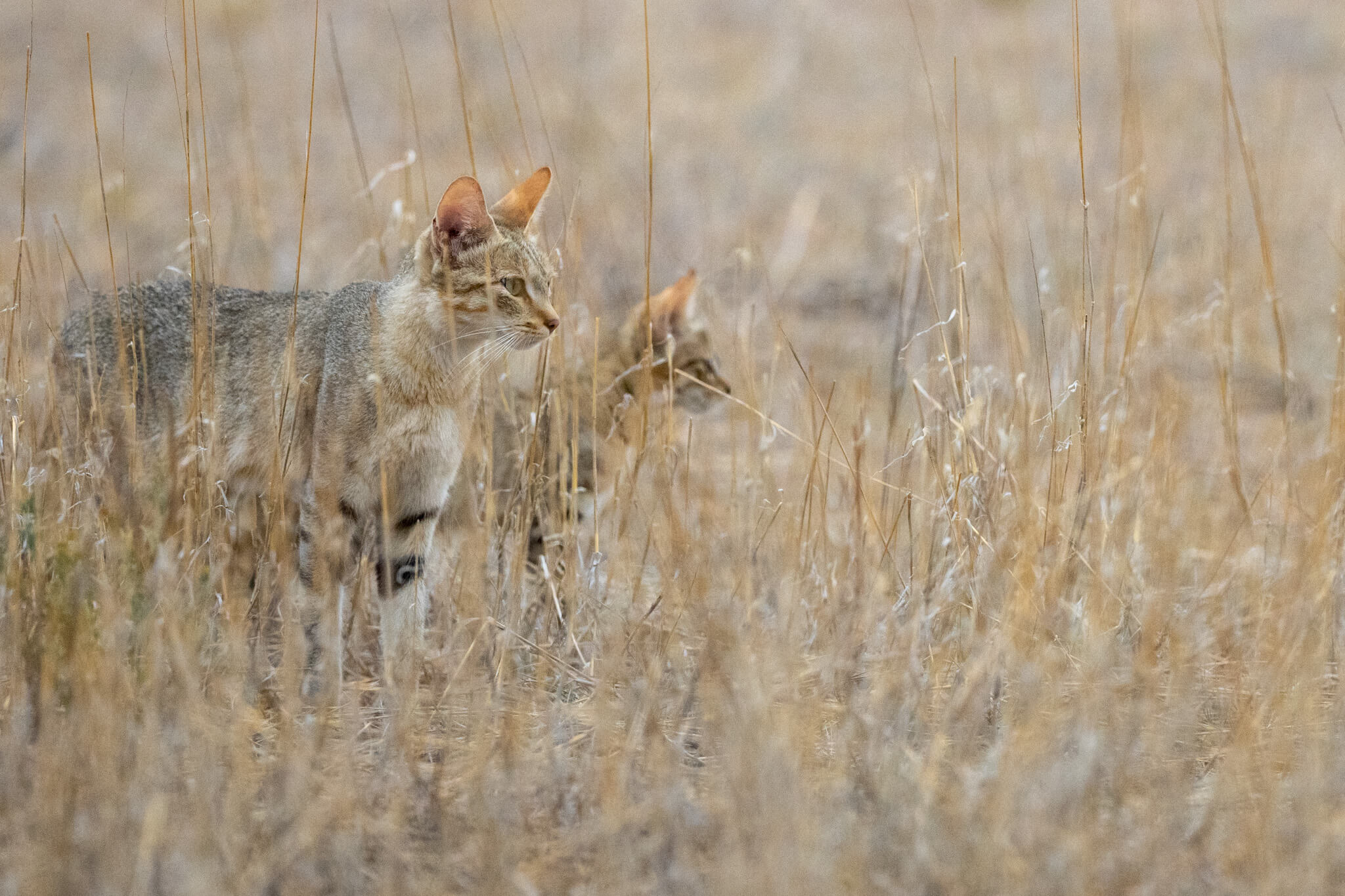
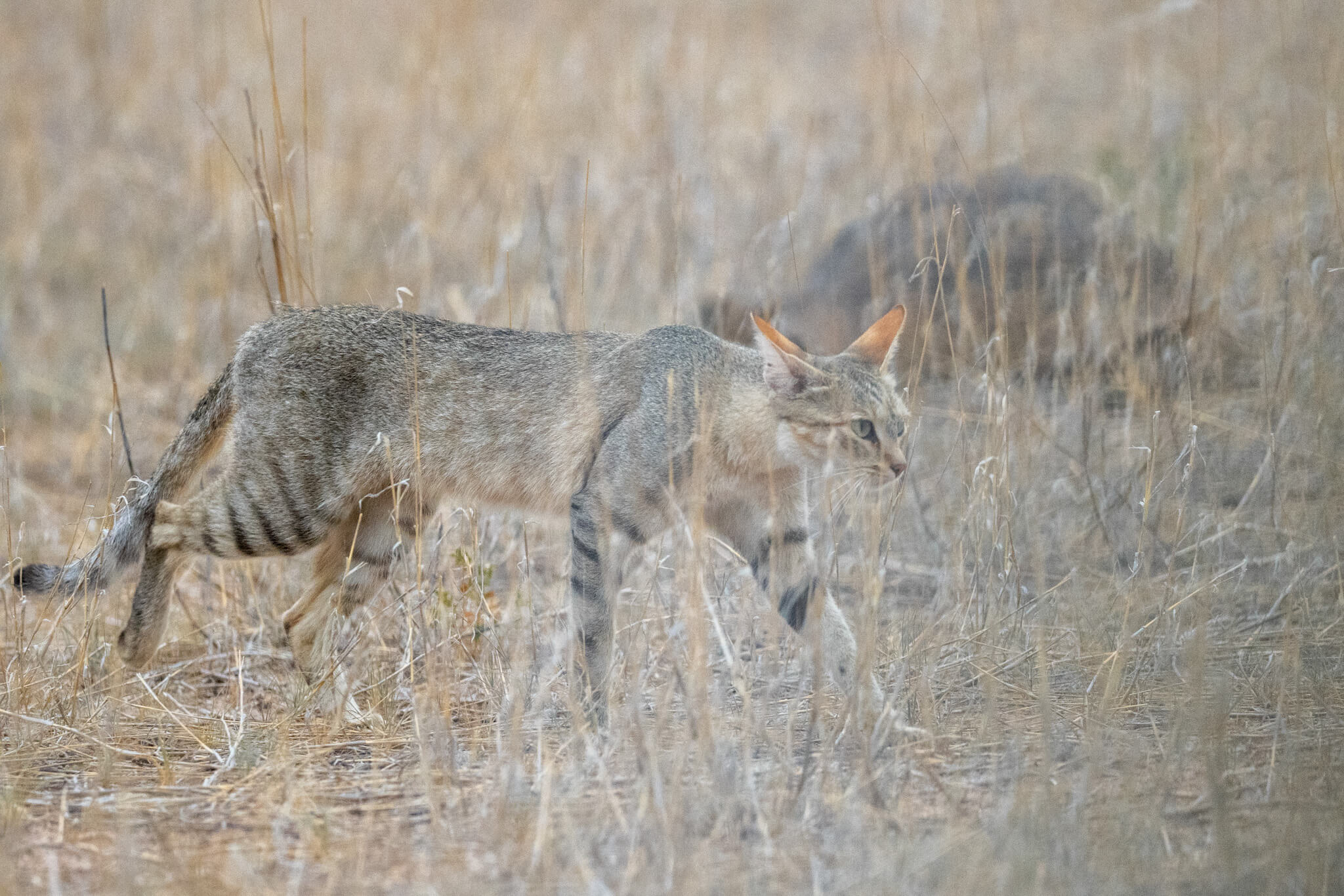
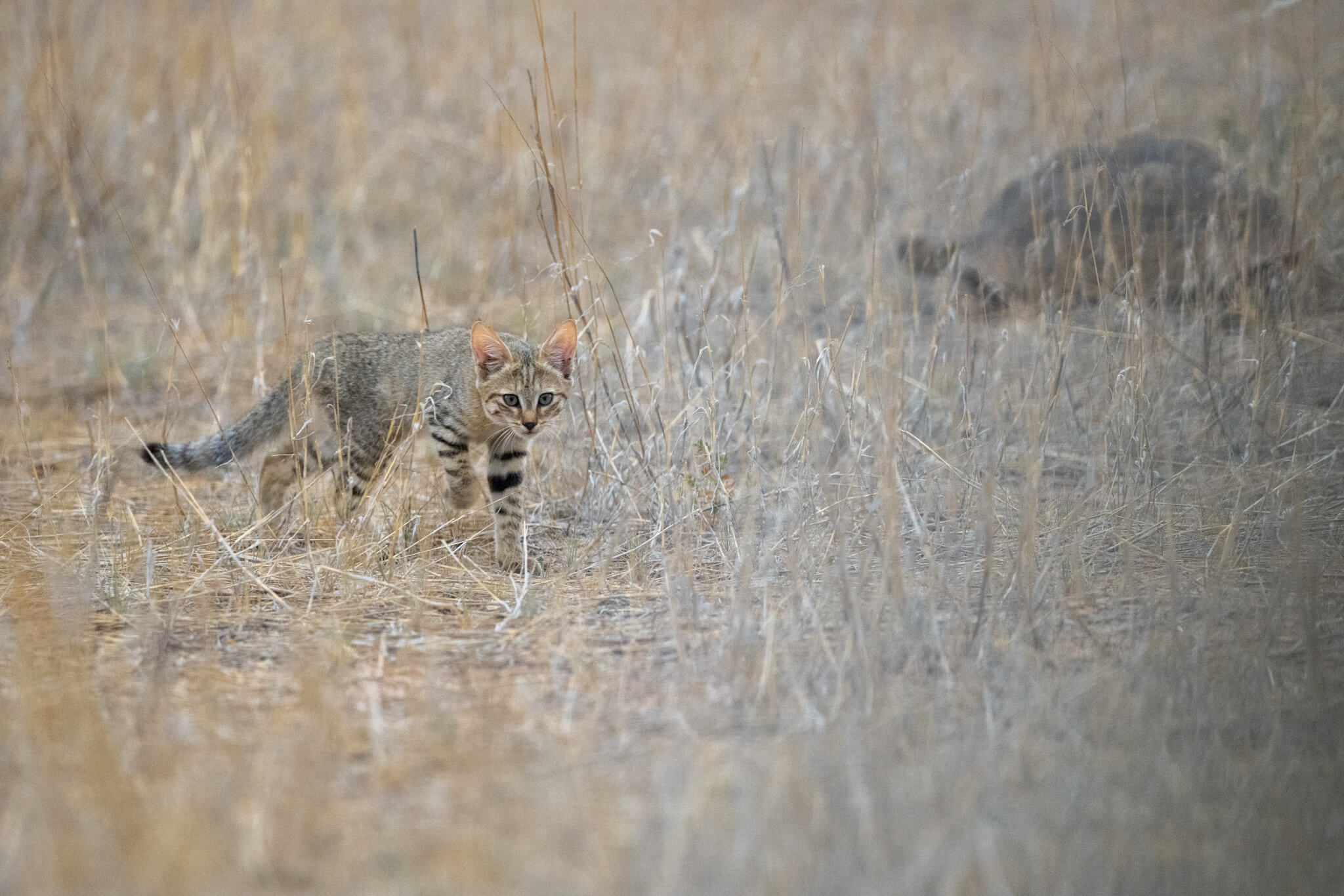
The crux with distance in Kgalagadi
The next two days were rather unremarkable and lousy. We saw a spotted hyena from a distance and concluded that it was on its way to a waterhole. Accordingly, we positioned ourselves there and waited. Indeed, she appeared and we were able to observe her beautifully. Kgalagadi is always good for watching birds of prey! It is virtually a paradise. Nevertheless, our biggest point of criticism comes up one more time: The road network is simply too thin. A small loop in the riverbed(!), where we stood in June with 12 vehicles across to observe a male lion in the opposite dune slope, was now all of a sudden apparently closed – without external signs. Anyway, we were asked by a SanParks vehicle to return to the trail. Without explanation and in a tone as if it had never been allowed to stay in this loop.
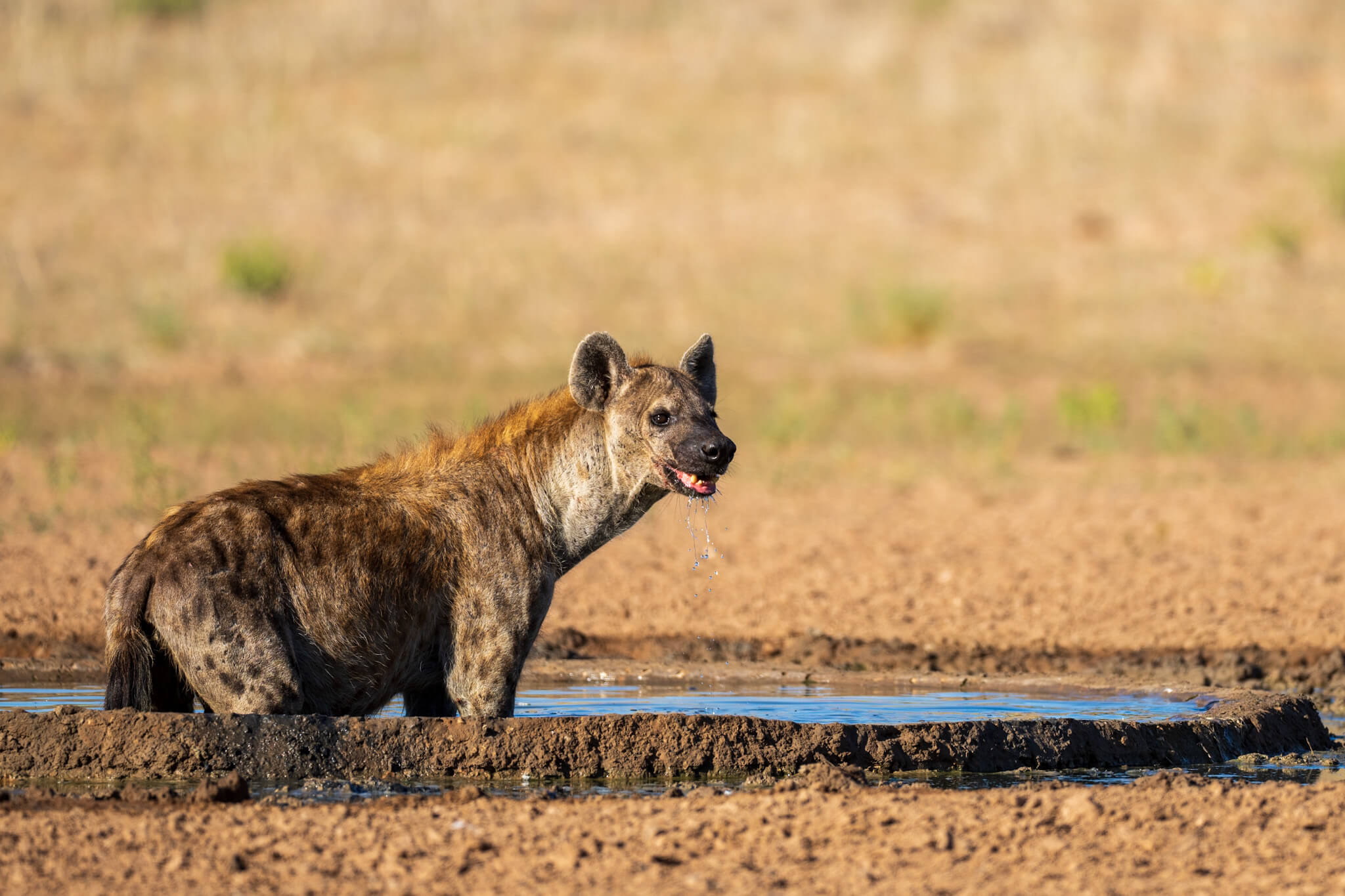
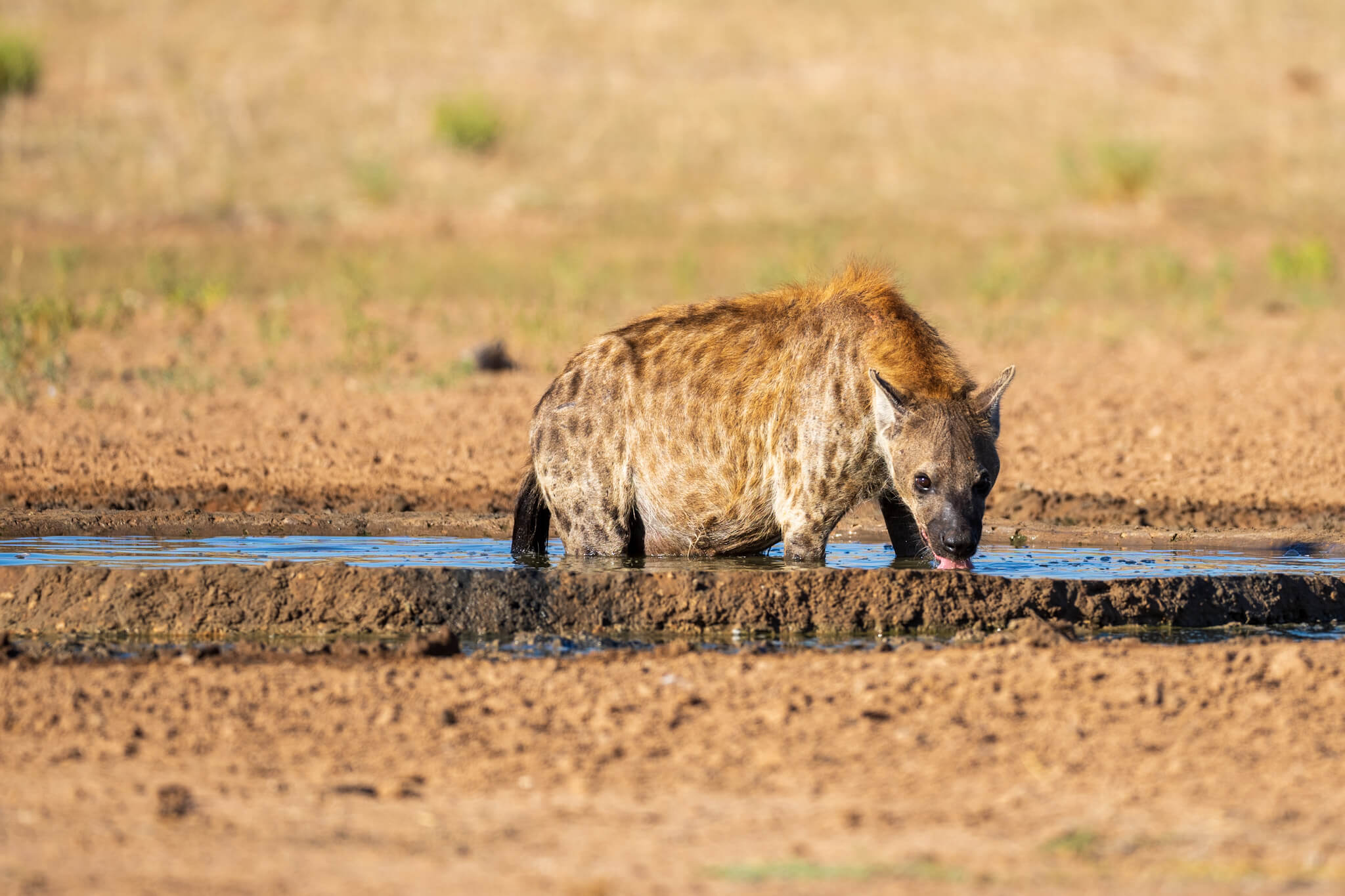
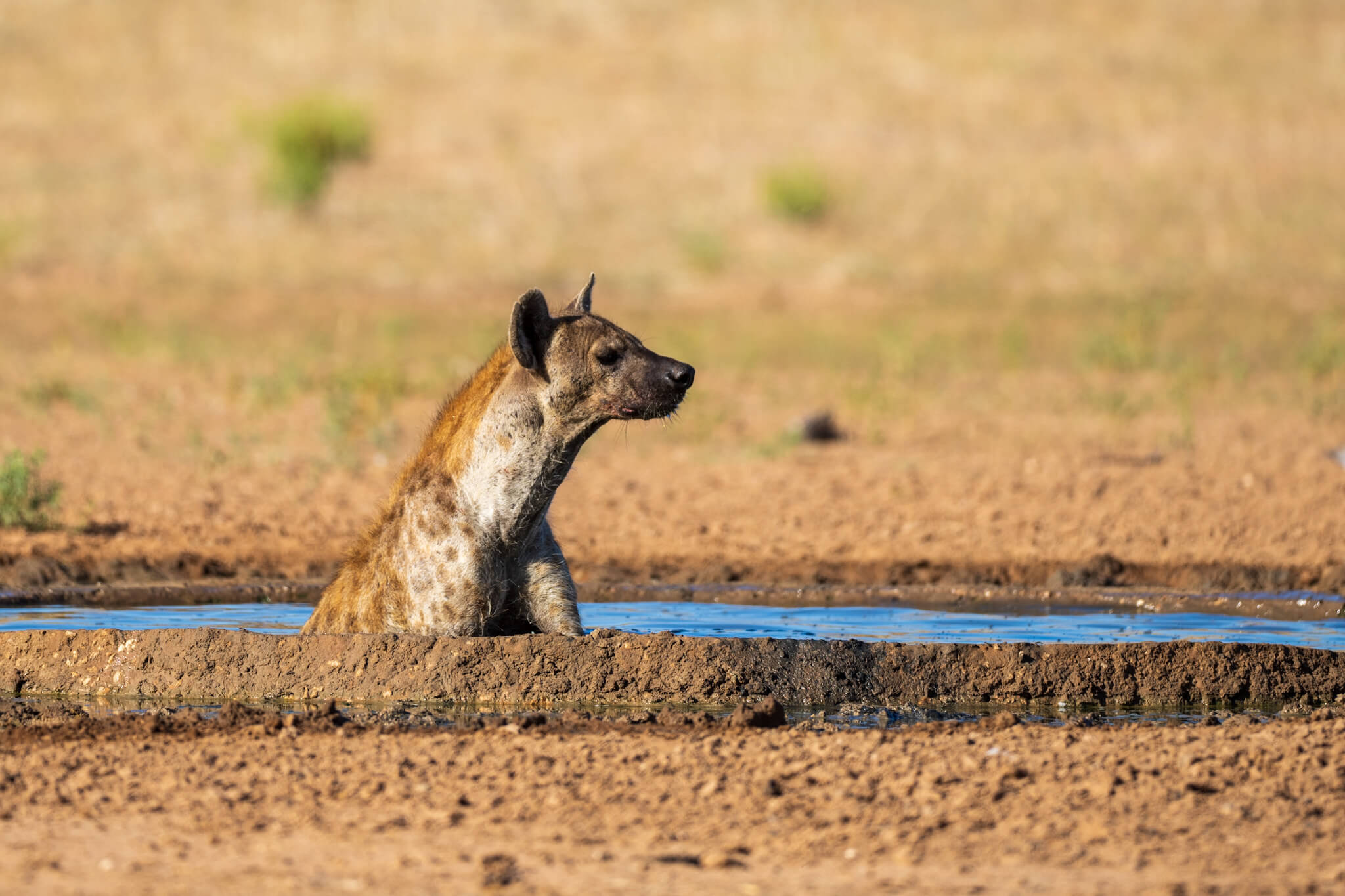
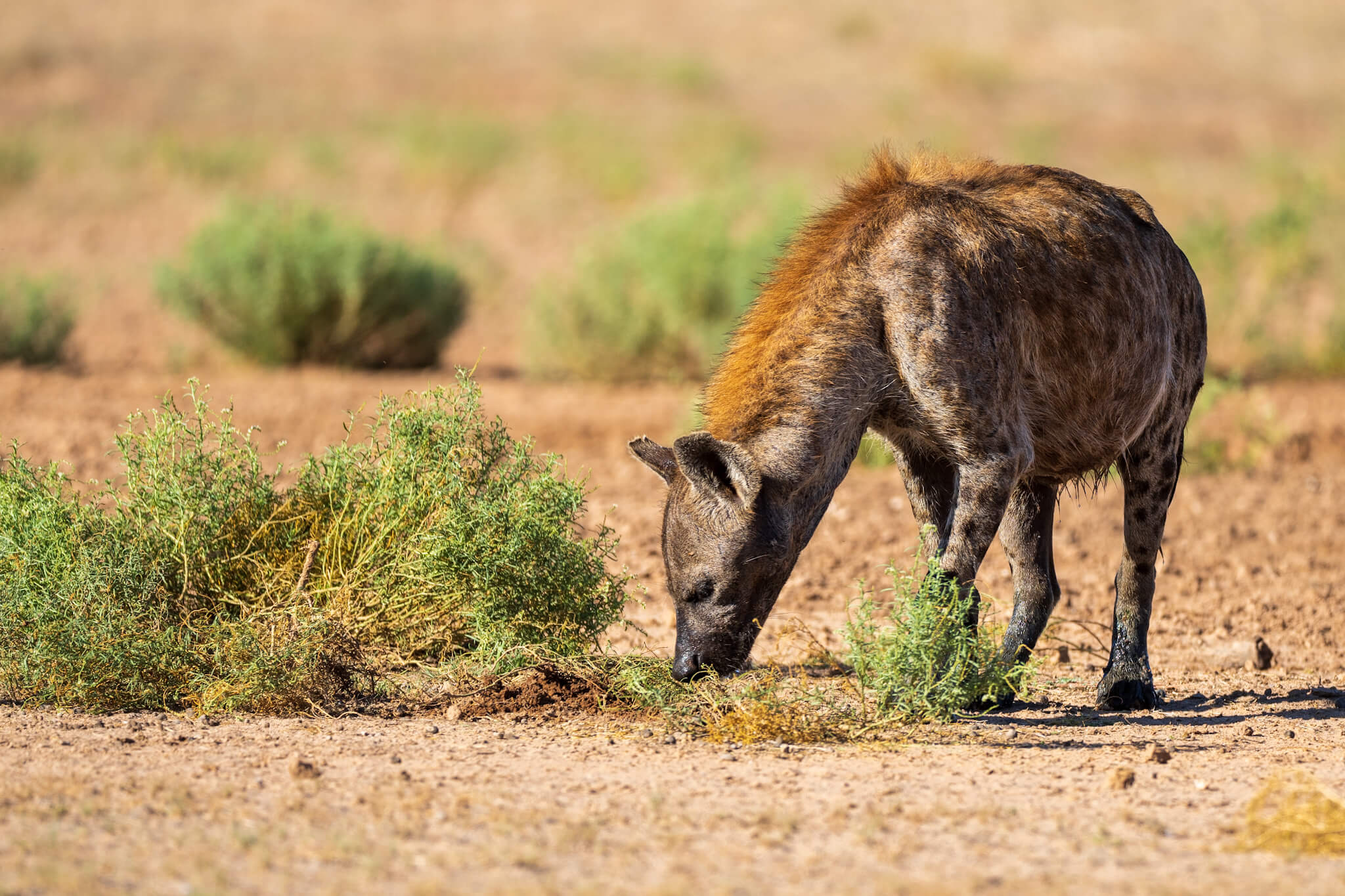
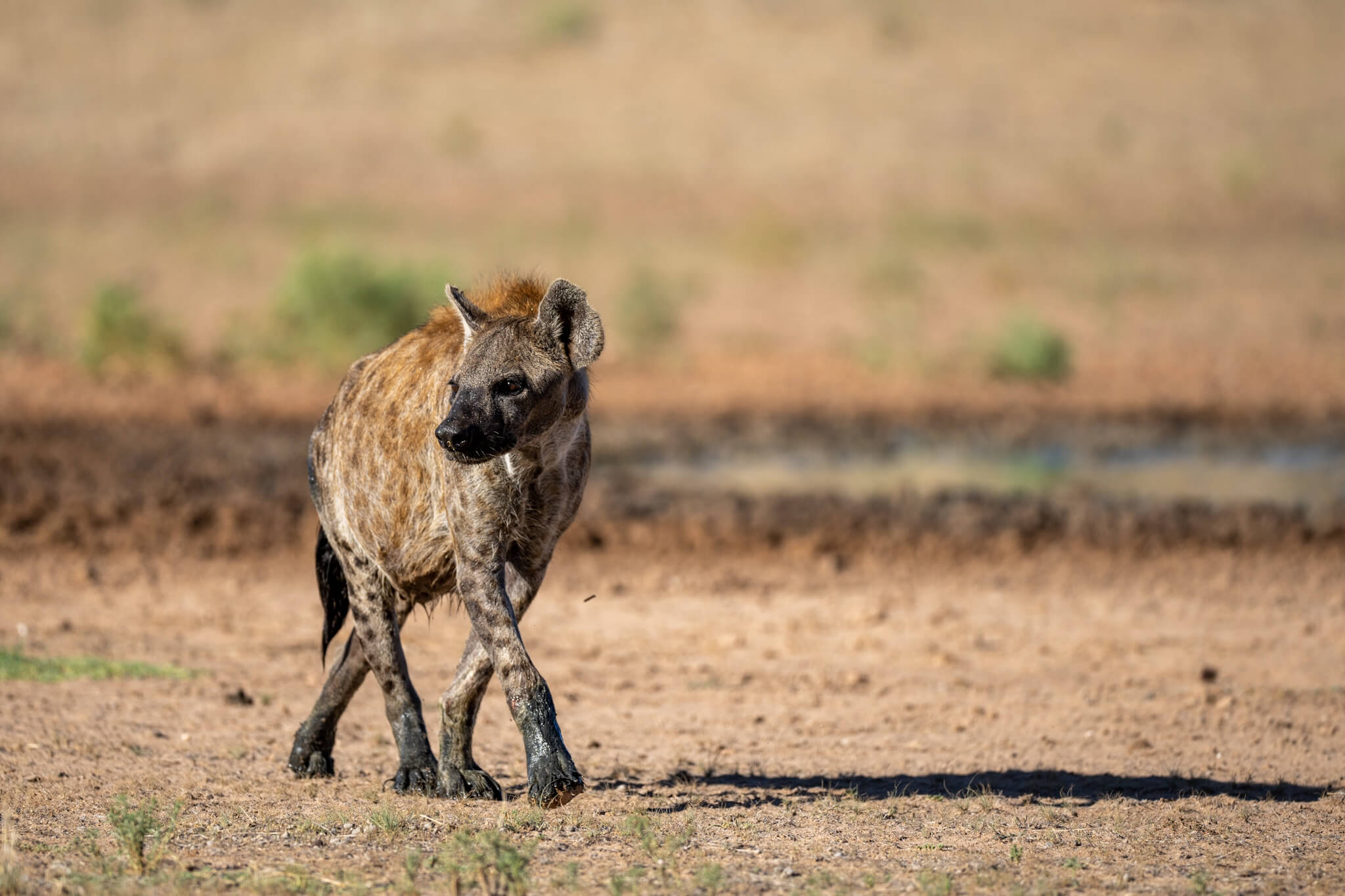

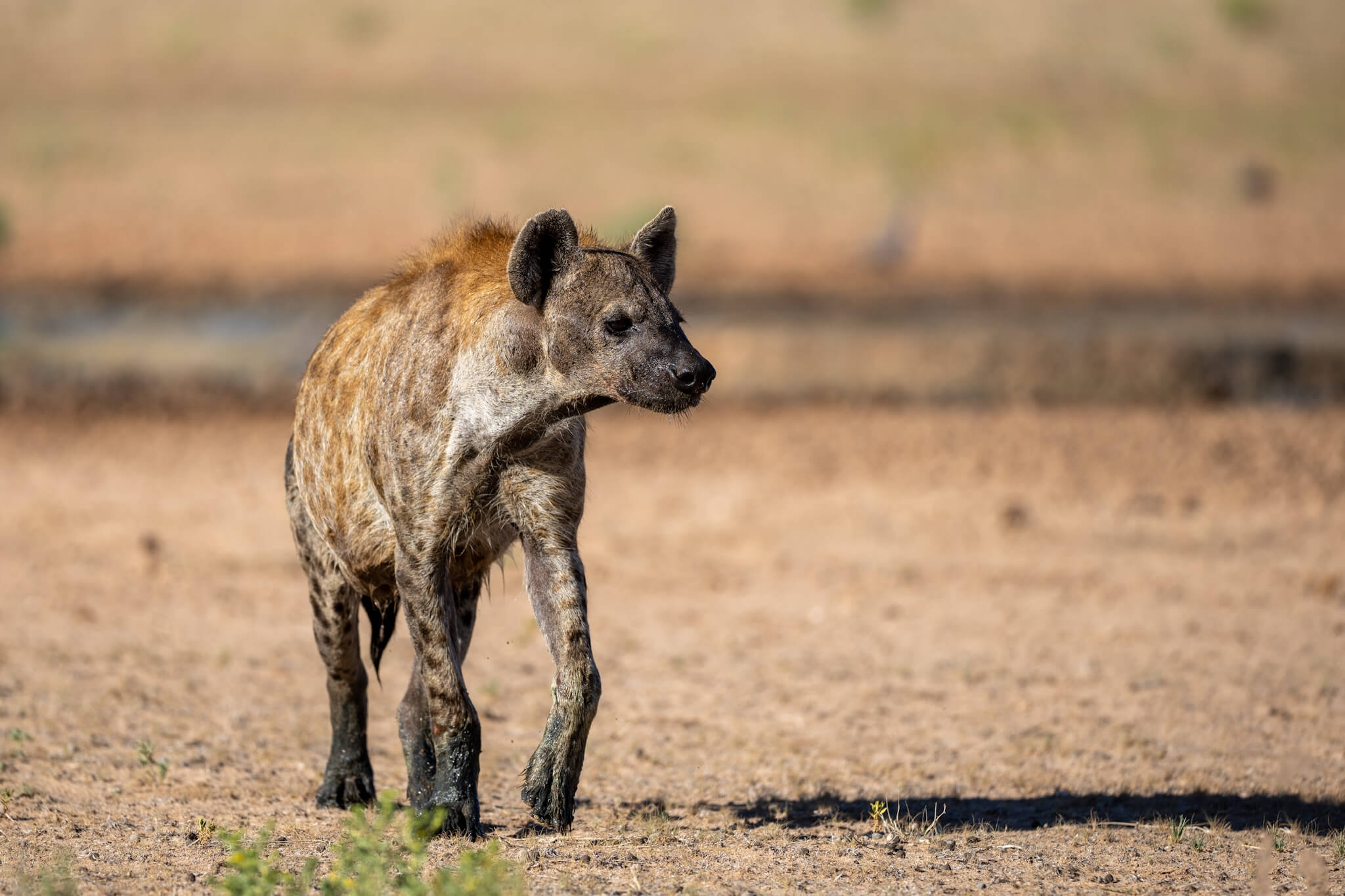
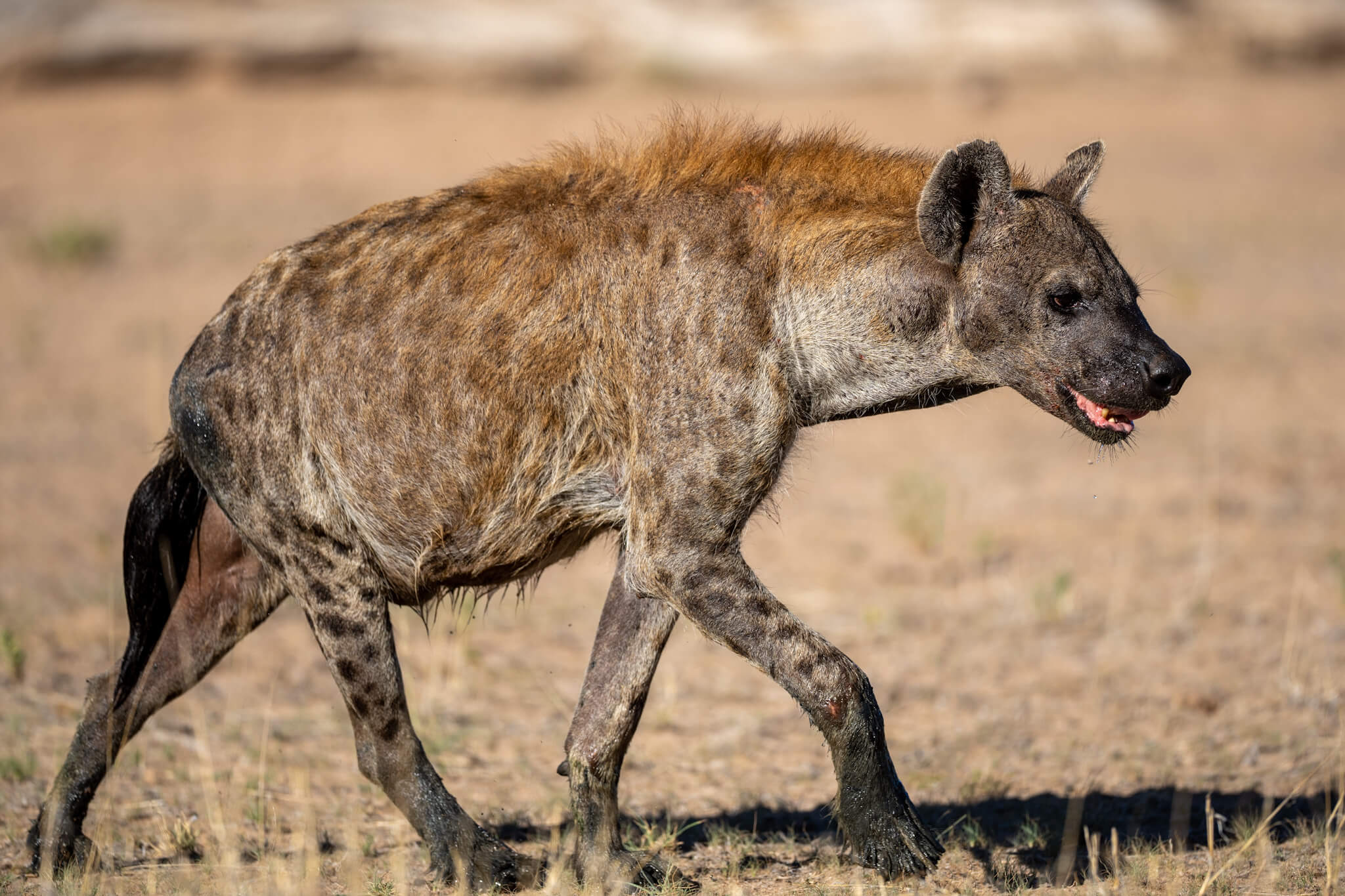
After four days we headed towards Twee Rivieren, where we spent two nights before heading to Nossob. During this time we had good sightings, all of which suffered from one aspect: they were just too far away and there was no way to get closer. Guido has the ability to shoot full frame at 700 mm, with a sensor of max 61 MP (Sony A7 RIV). This was not enough to create images that meet our standards. We are happy to show the docu-photos, but from our point of view this is eruptive. In conclusion, we stick to our assessment from June: the South African mentality is not ours. The camps are cramped, the regulations are very rigid and strict and the prices are excessive for what is offered. The really positive thing is the wildcard, which can lower the price structure to a very attractive level if used intensively. The regular daily prices would never be considered from our point of view.
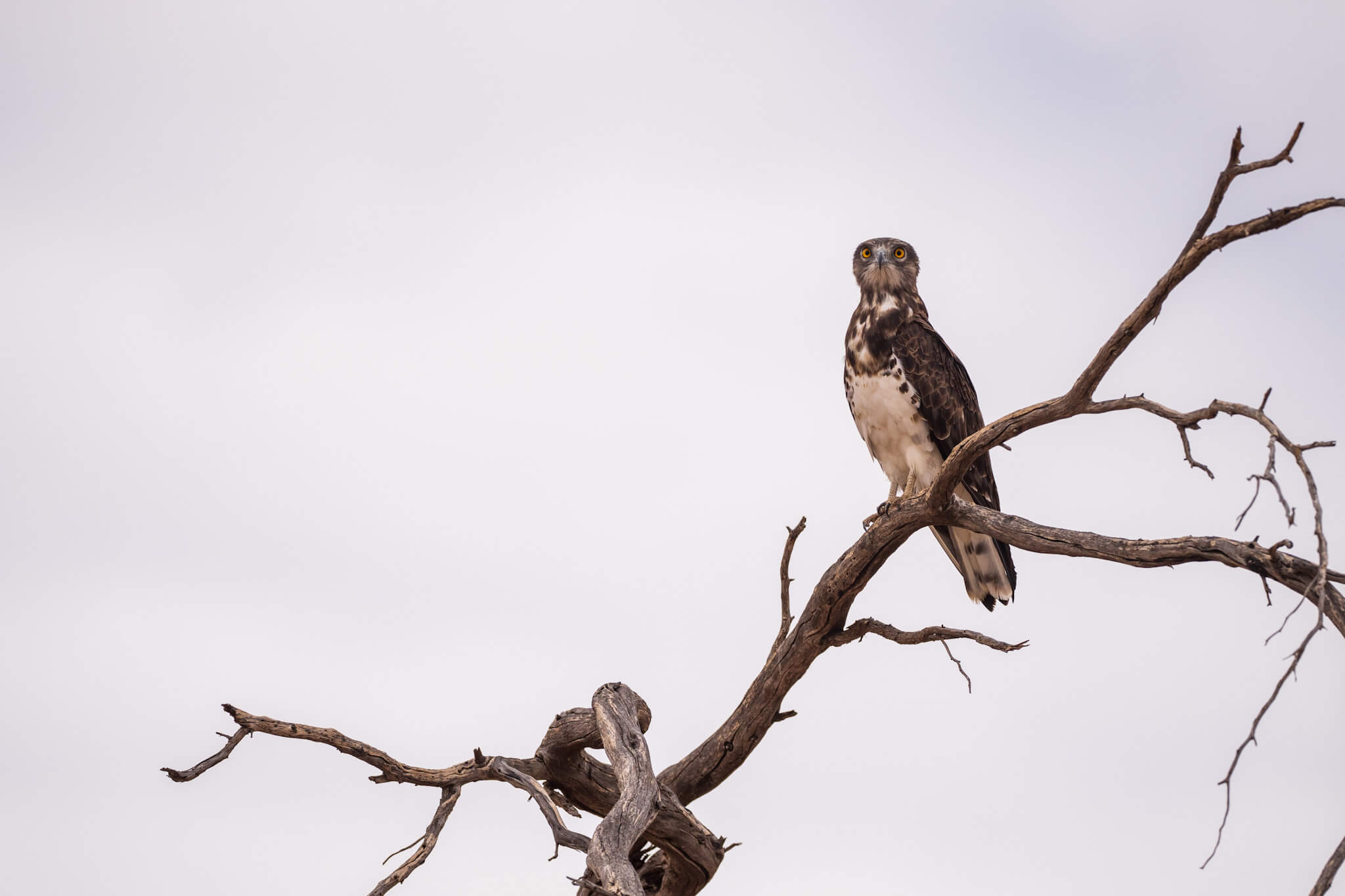
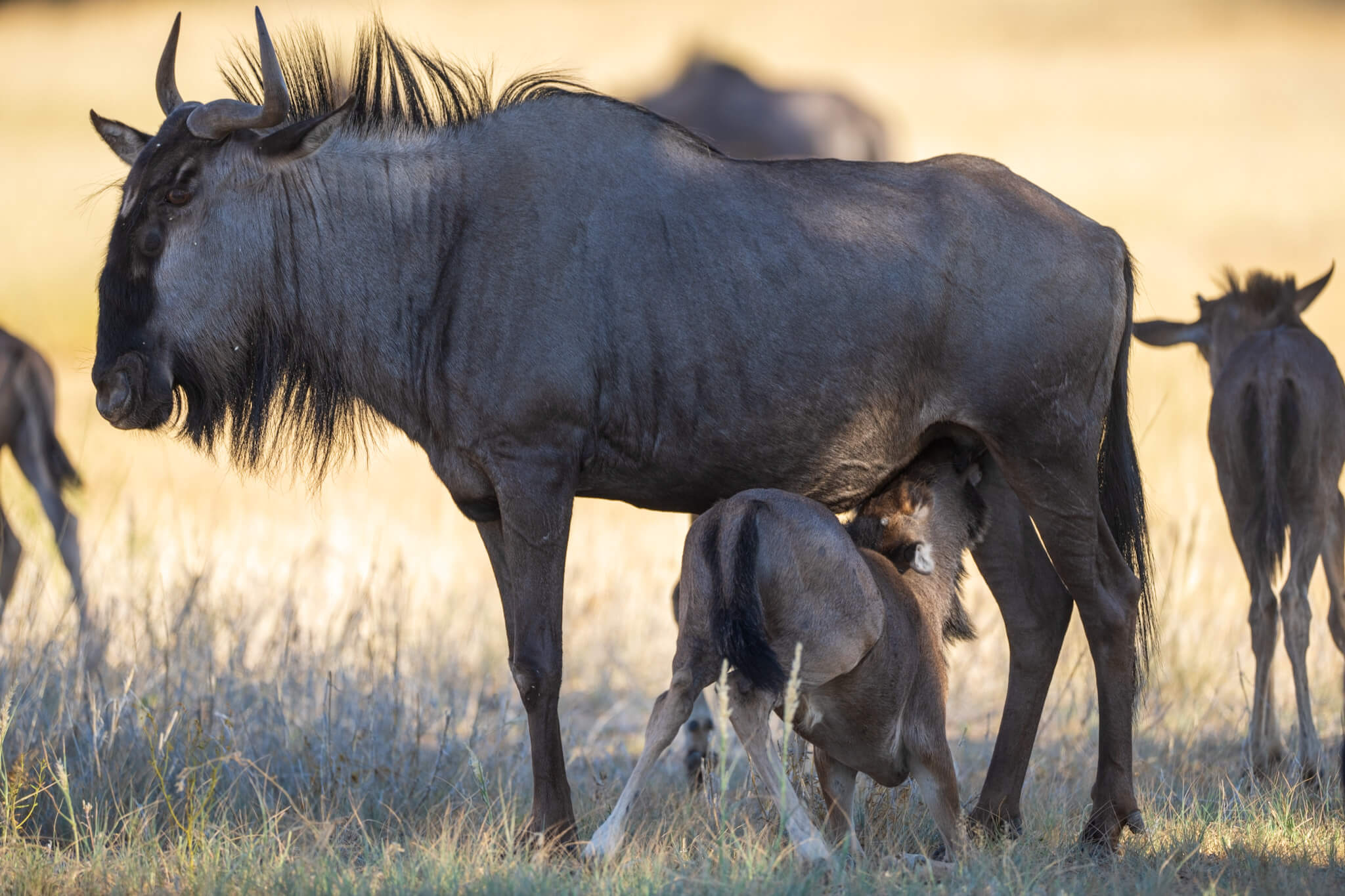
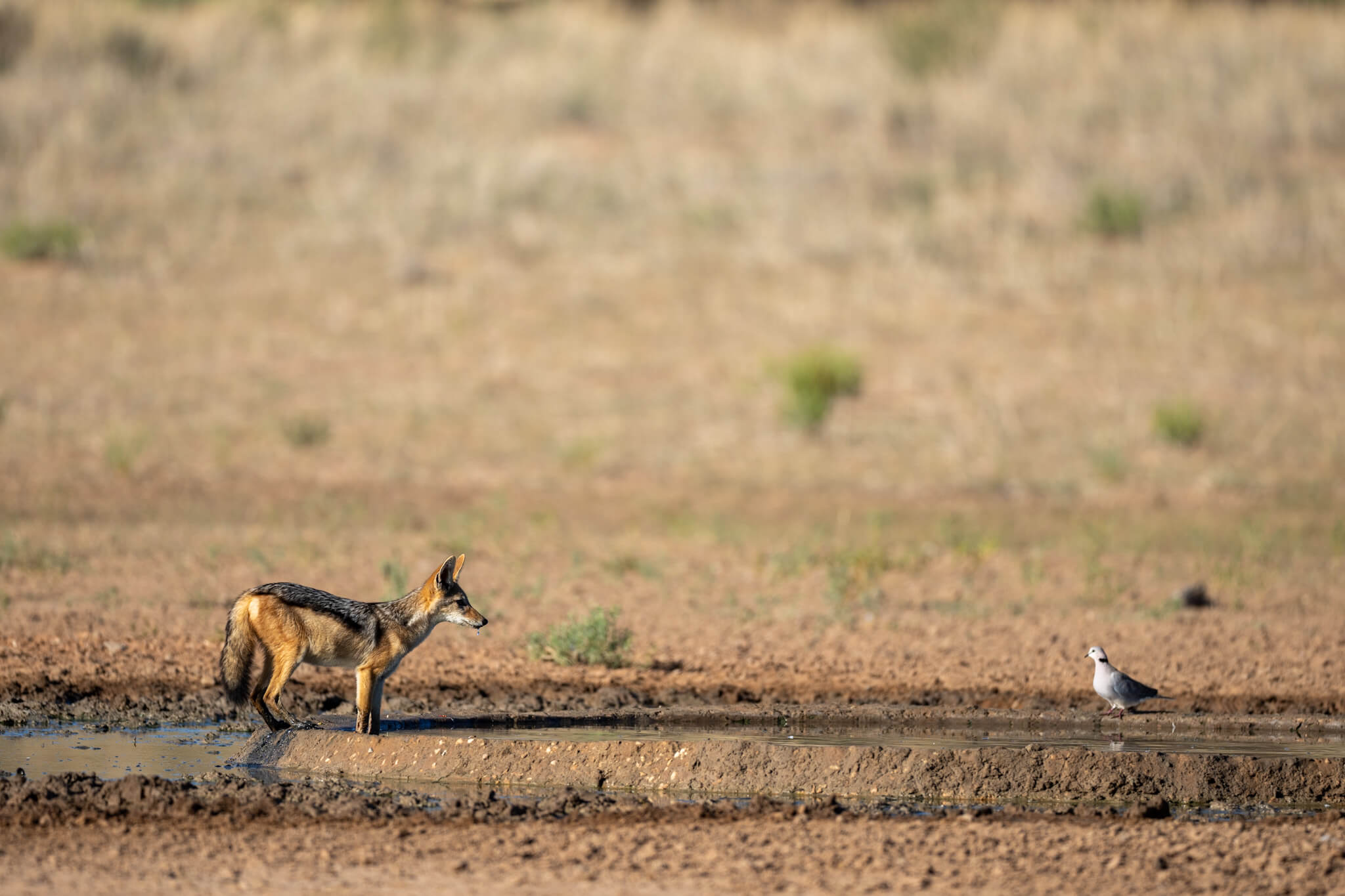
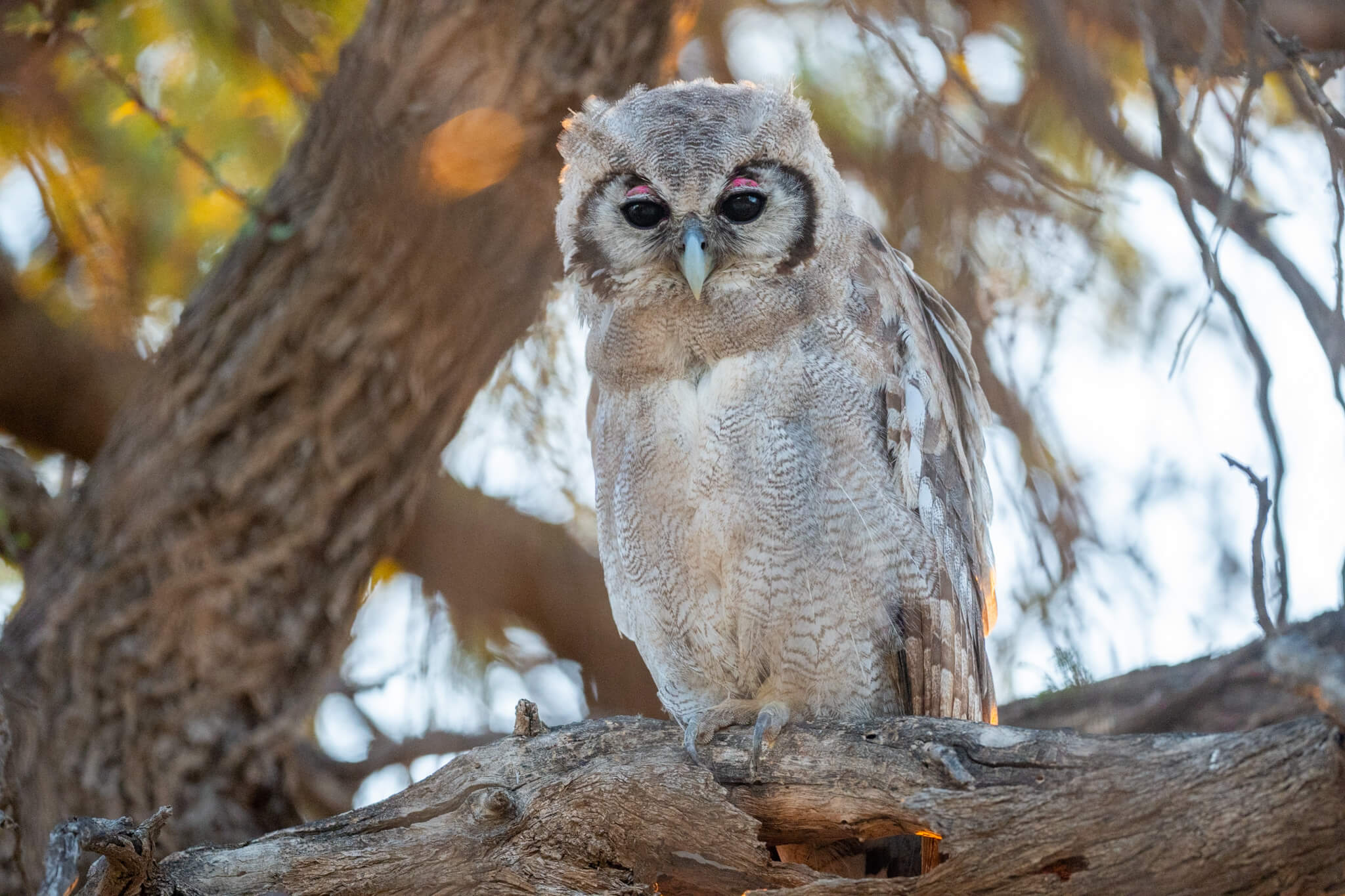
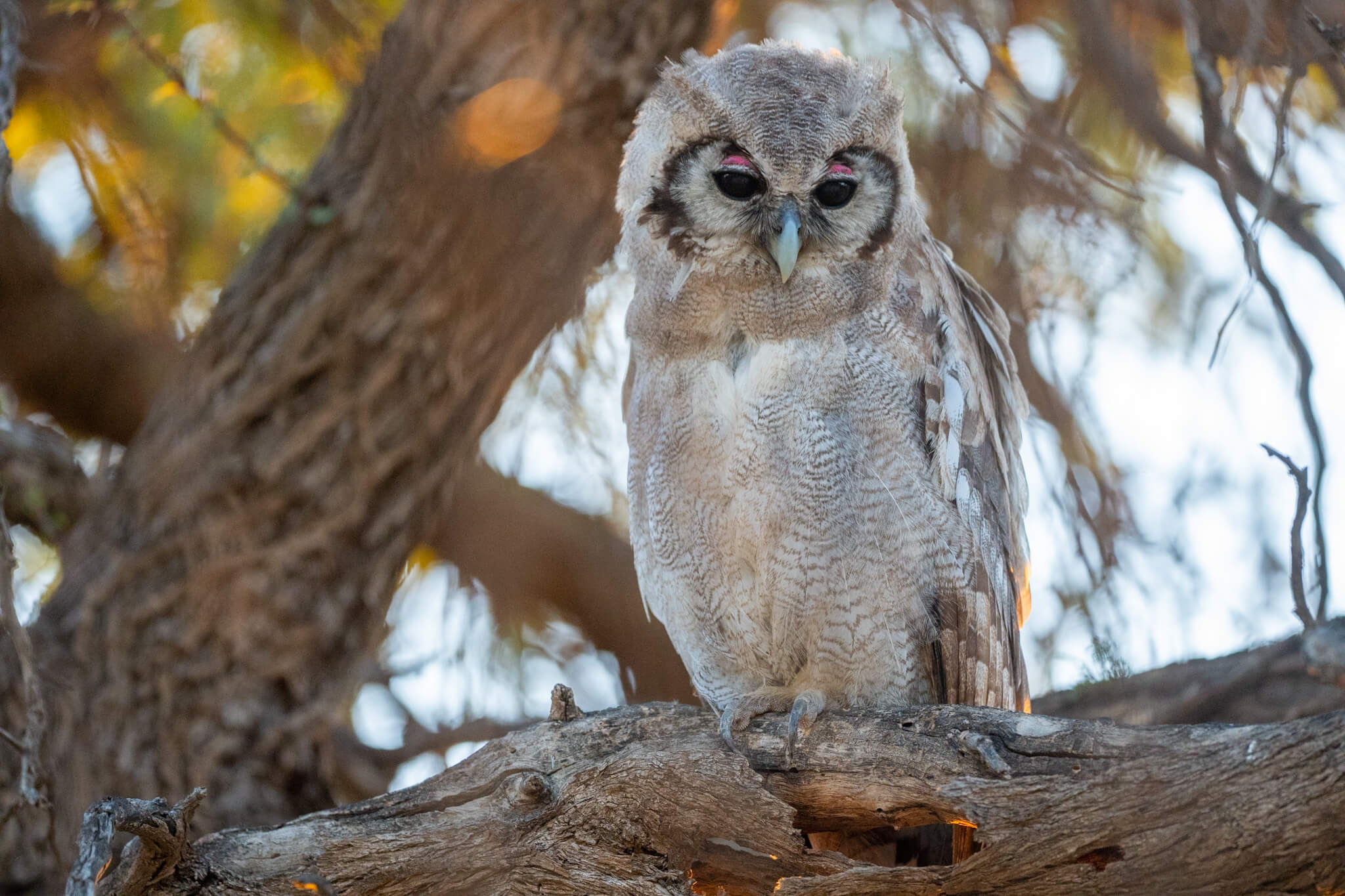
from here the DOKU photos start….
